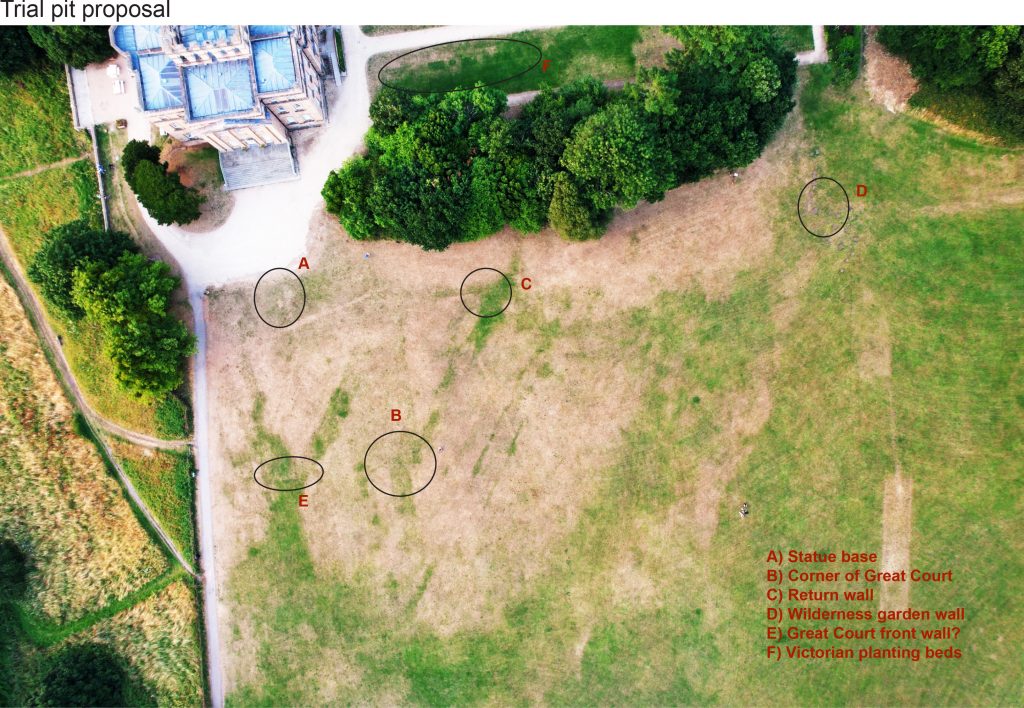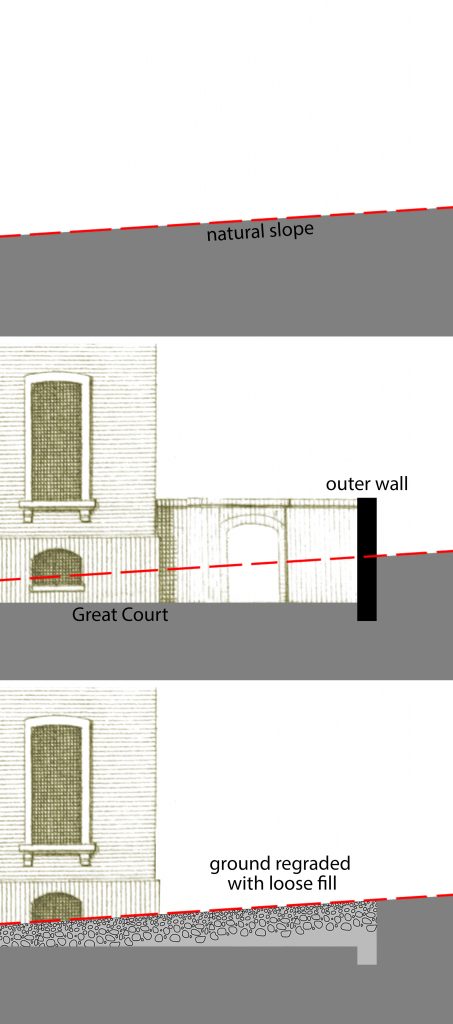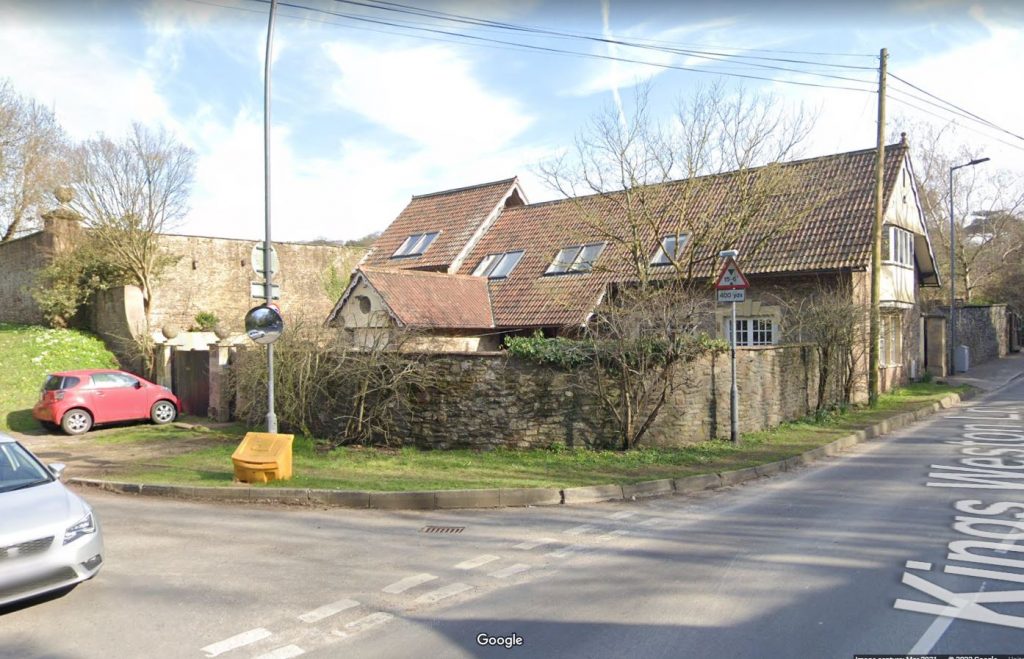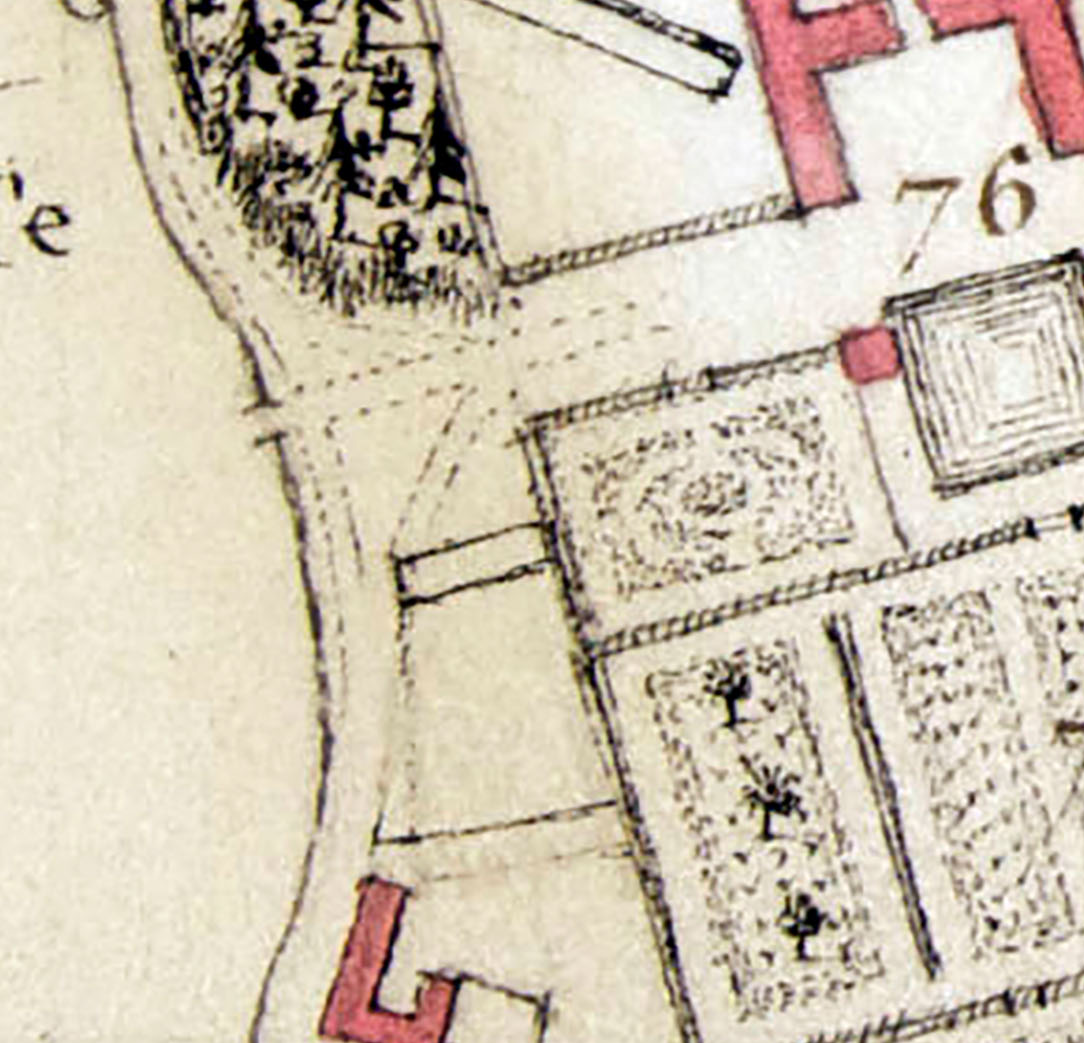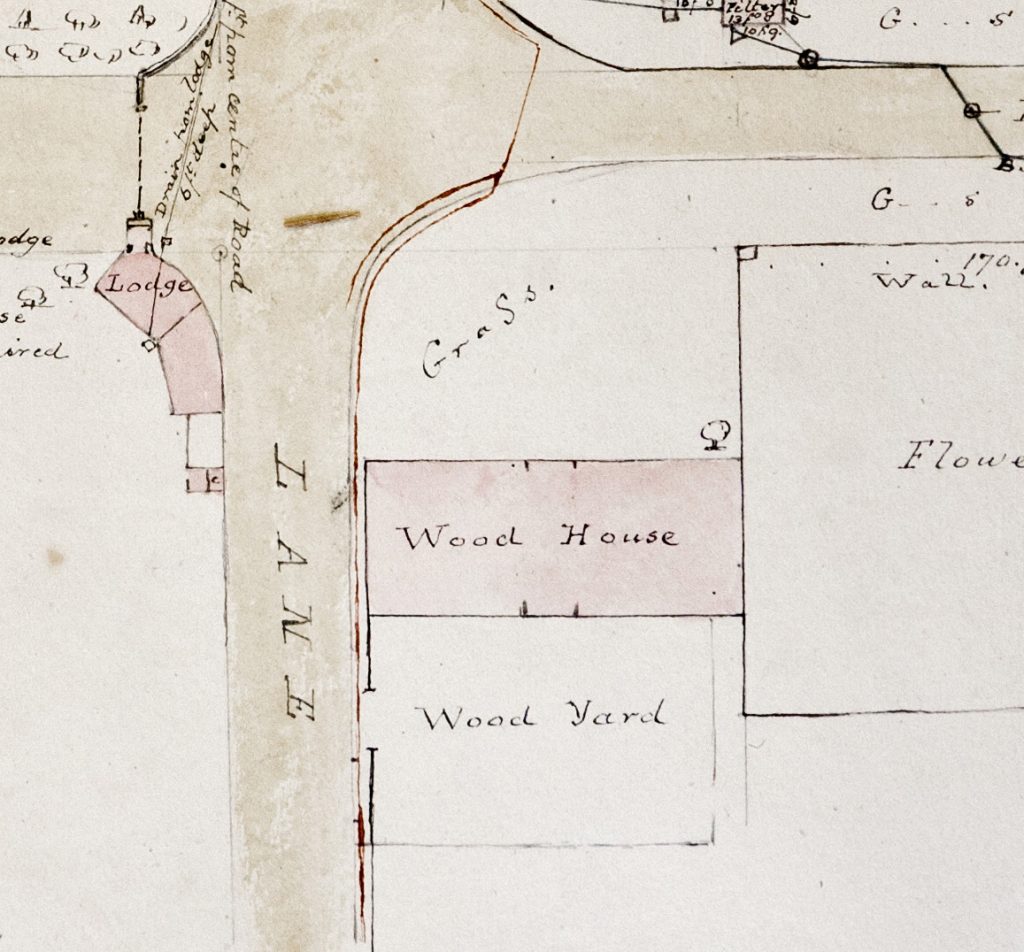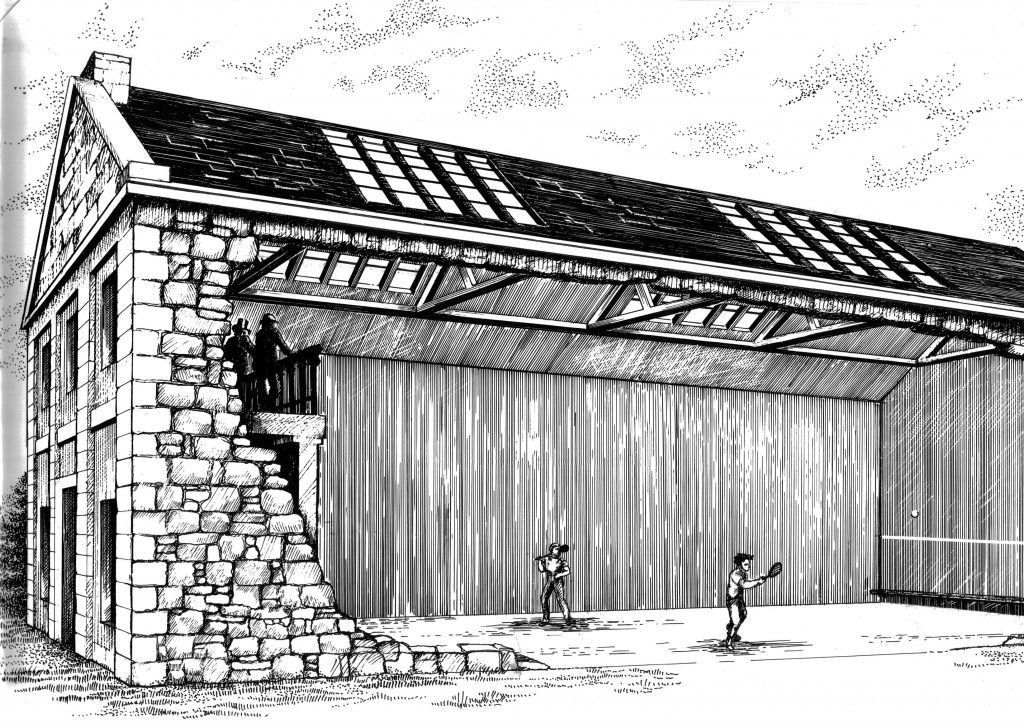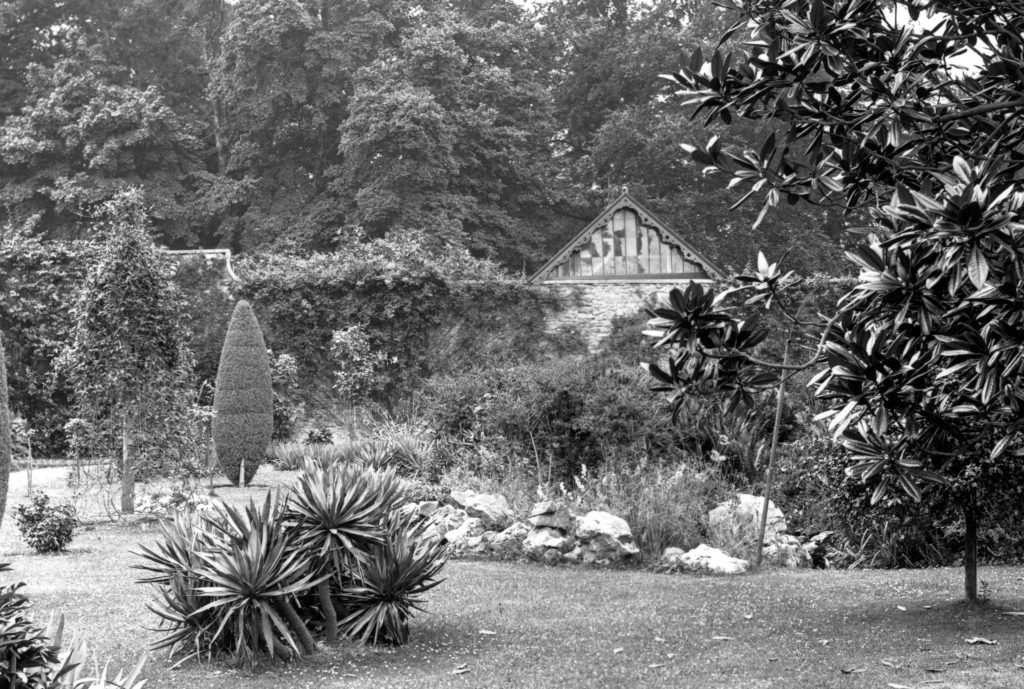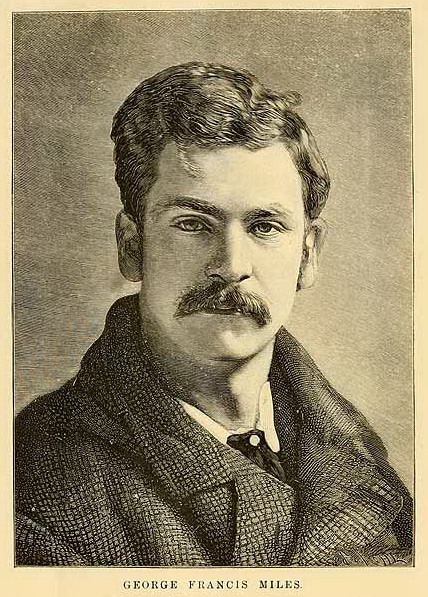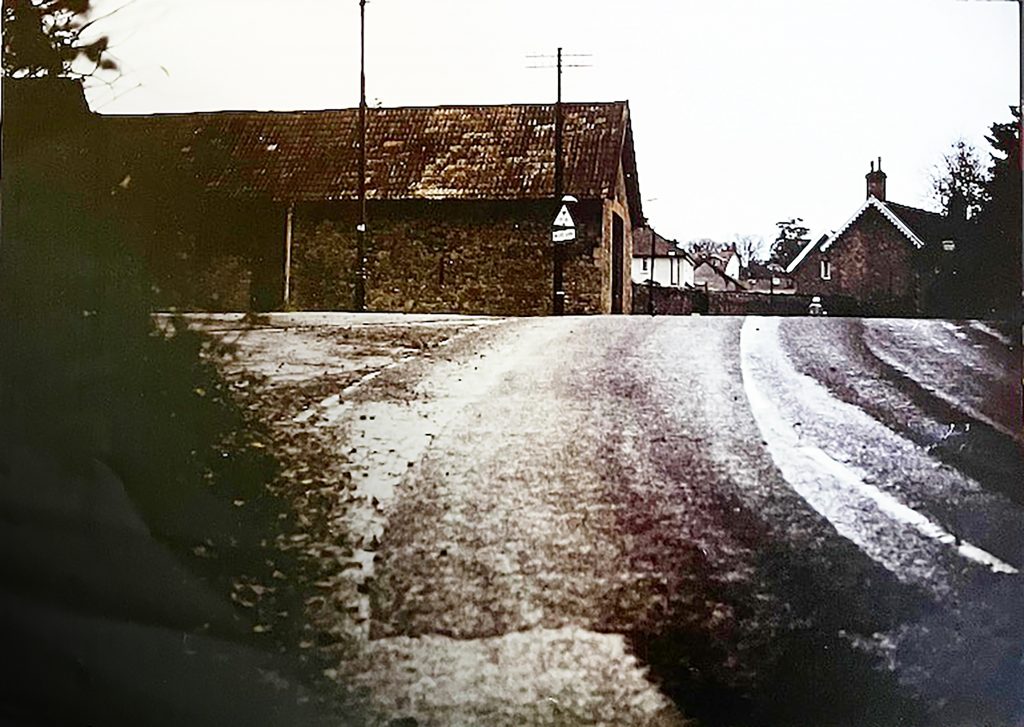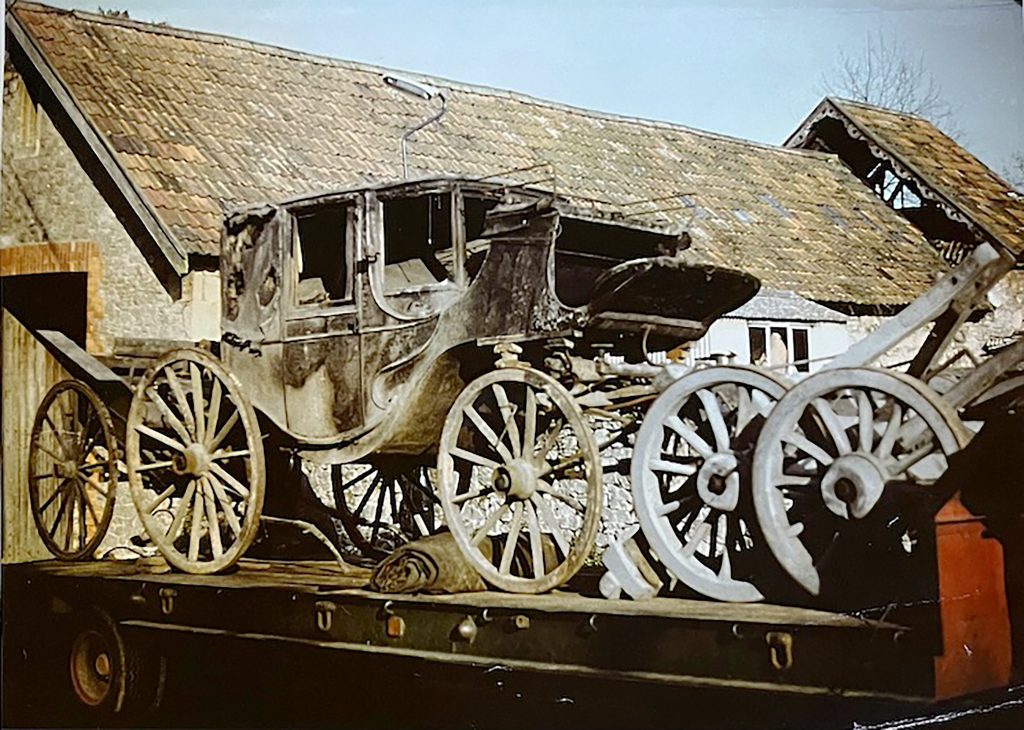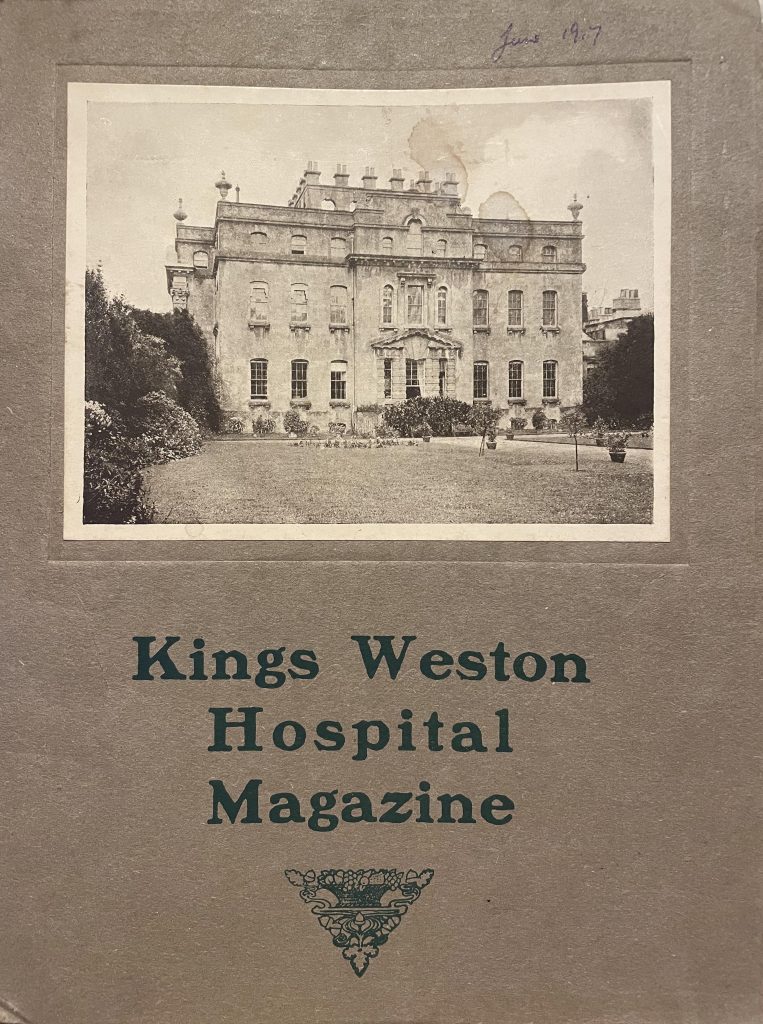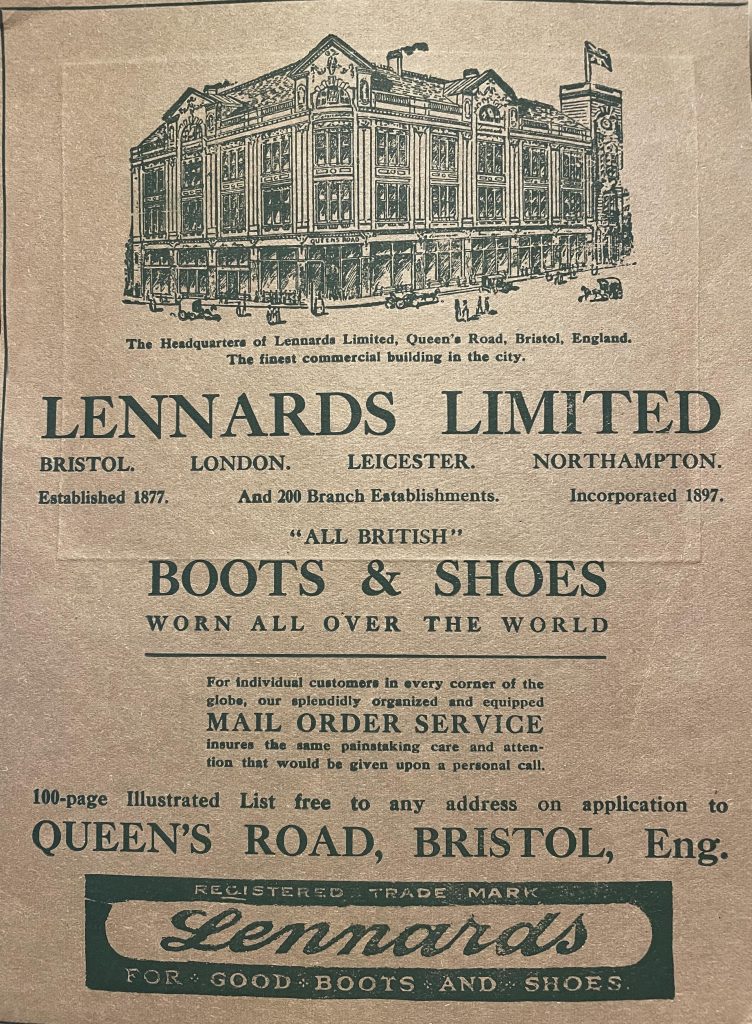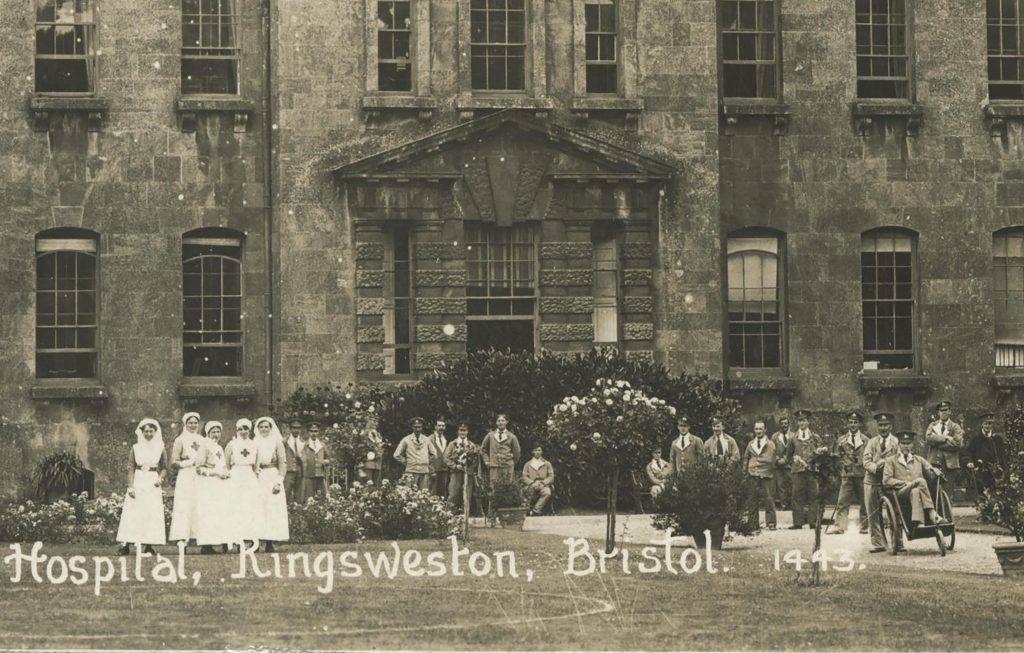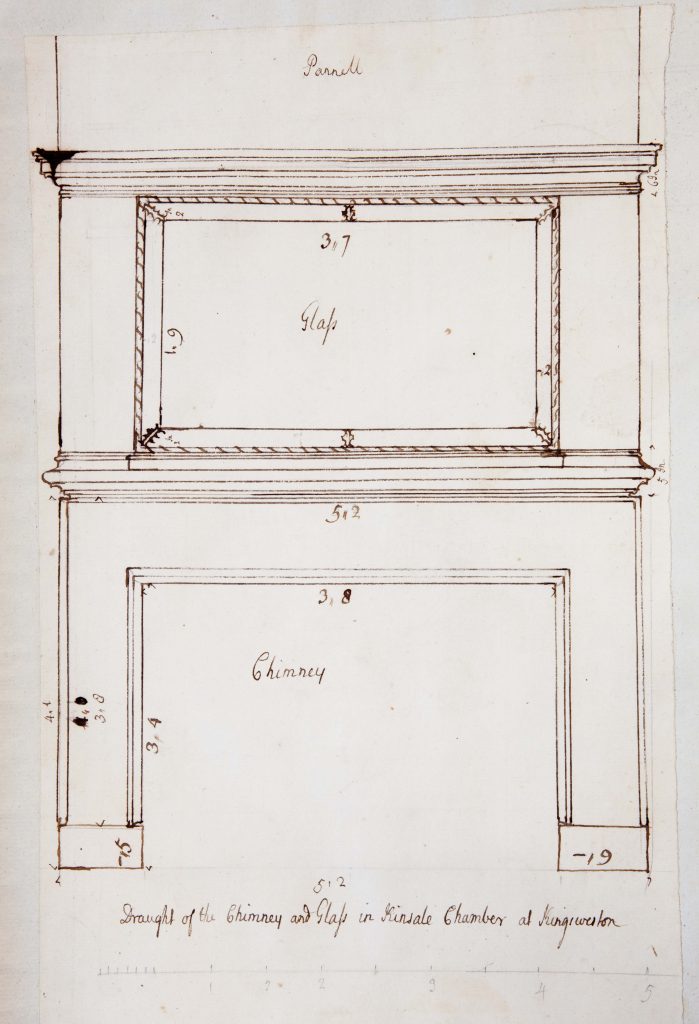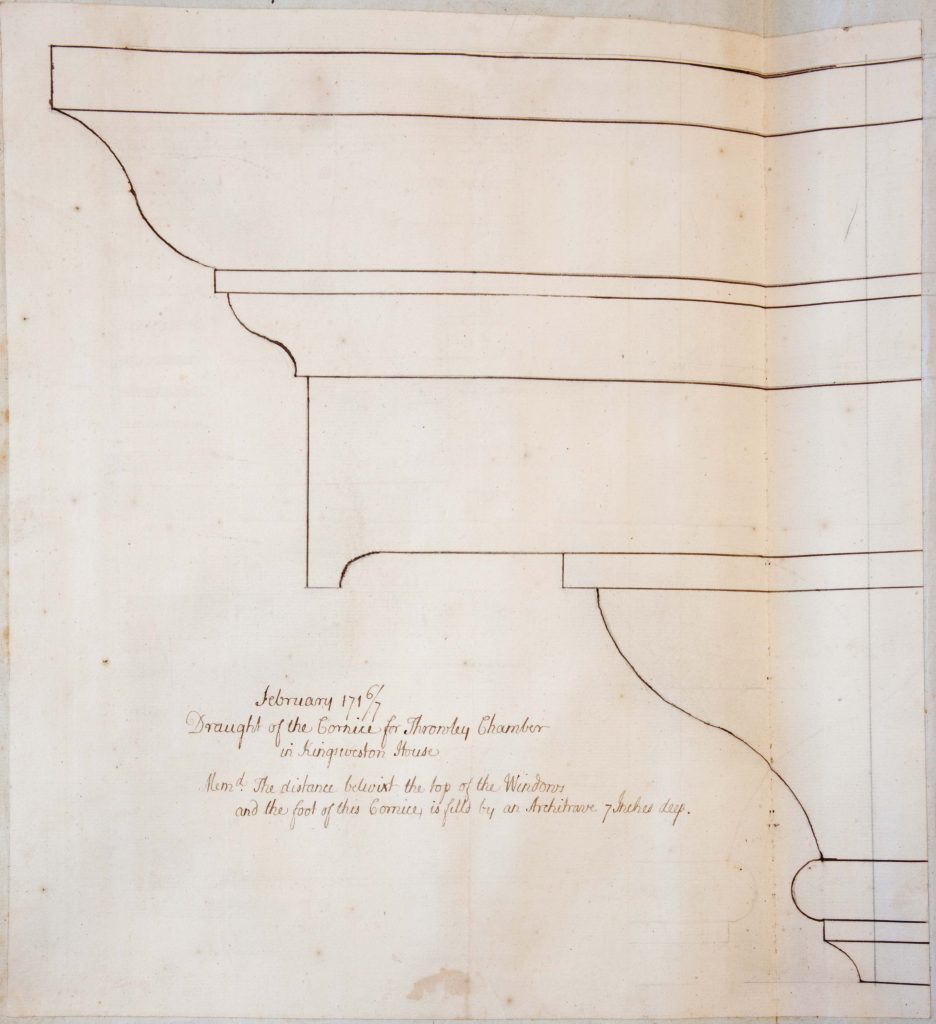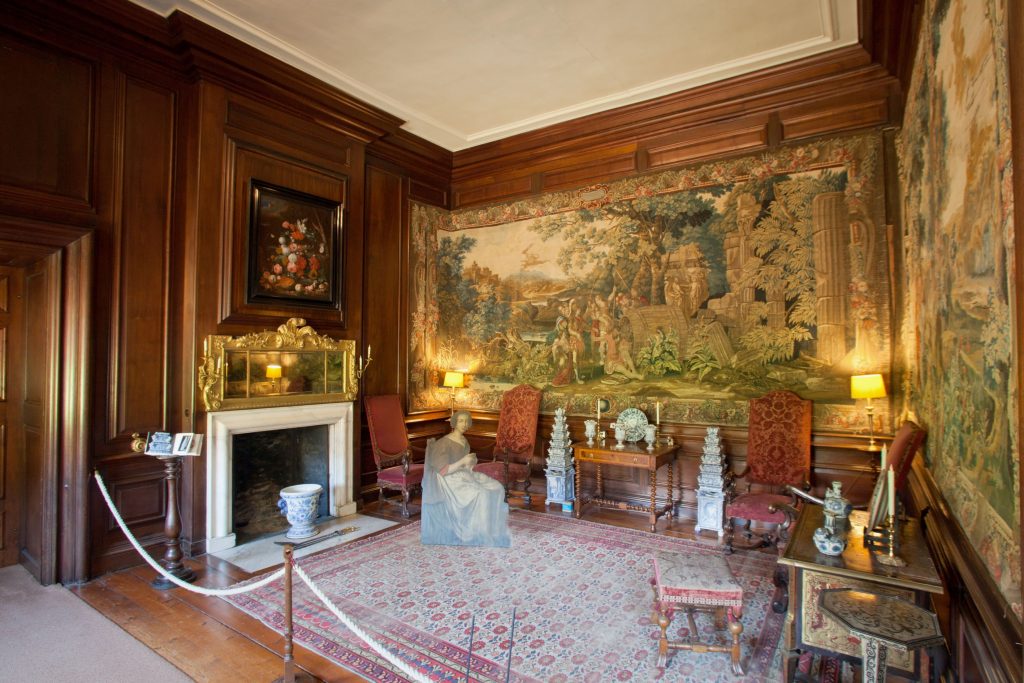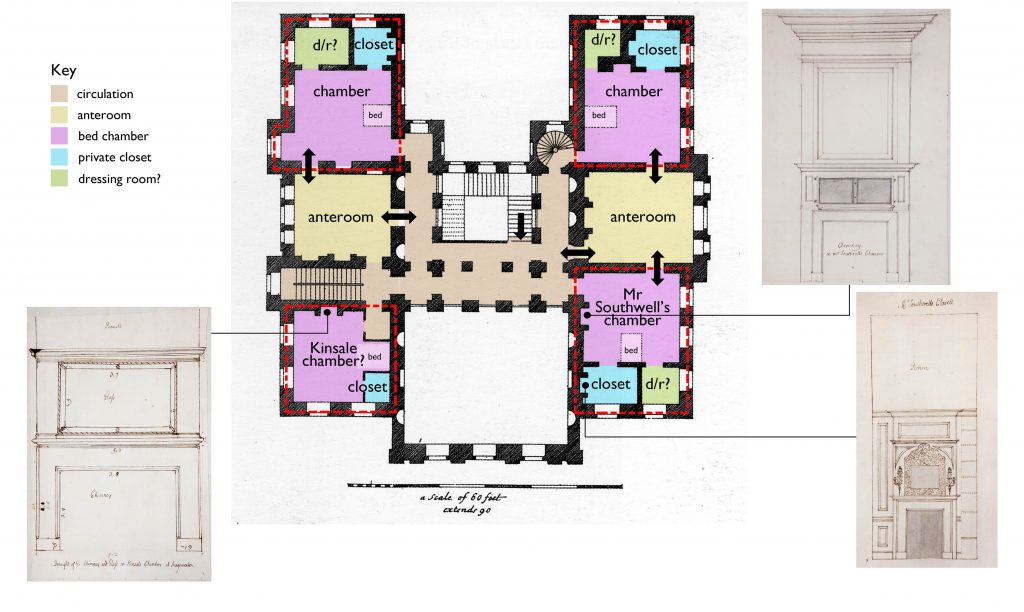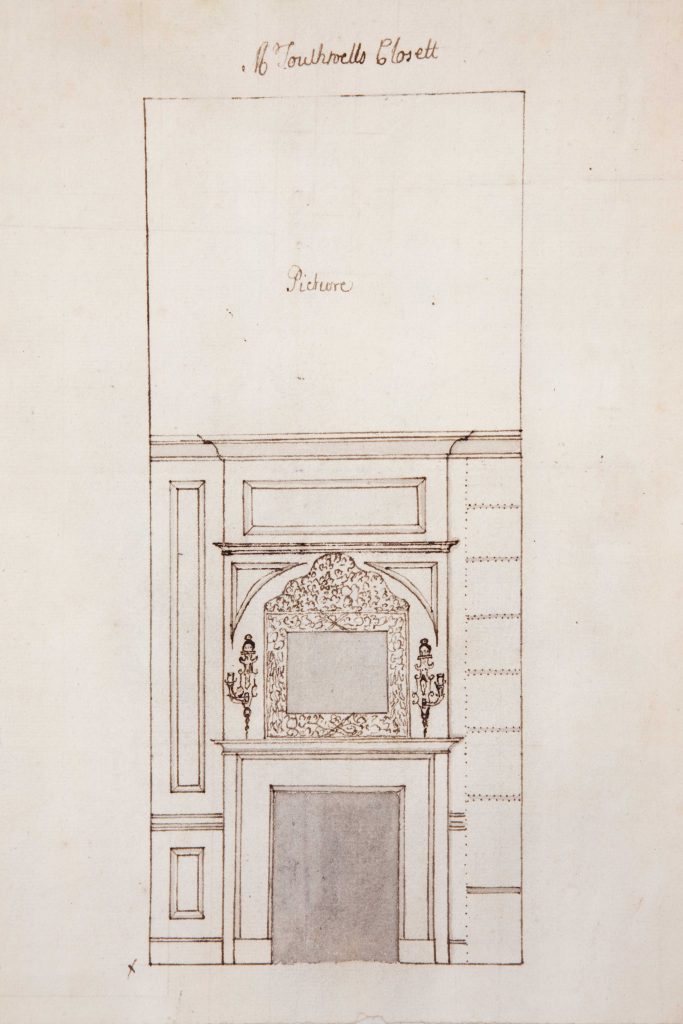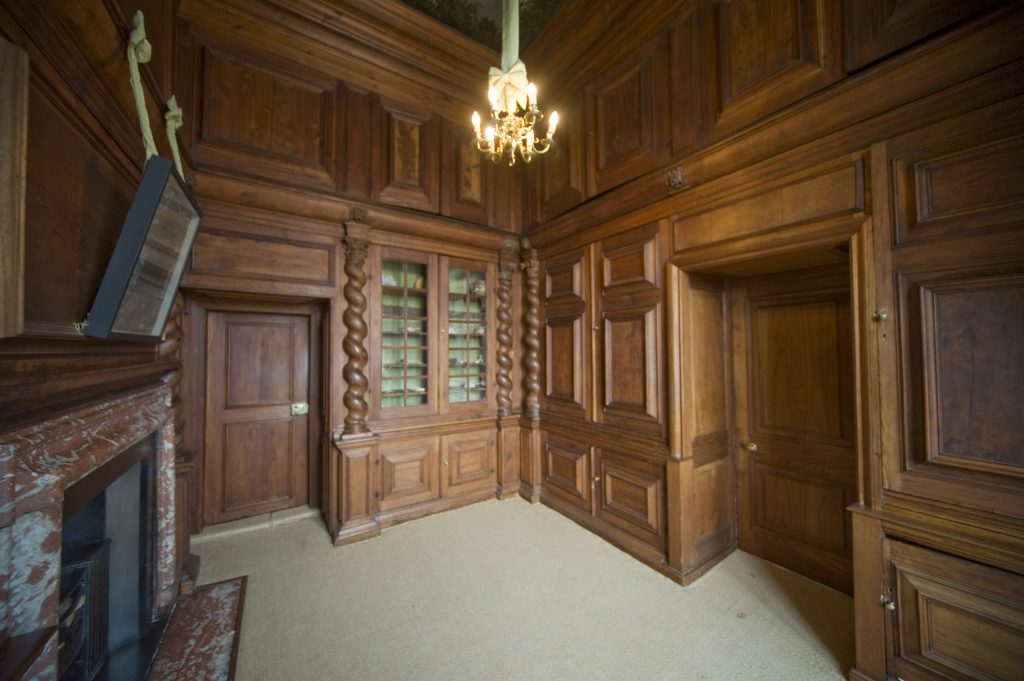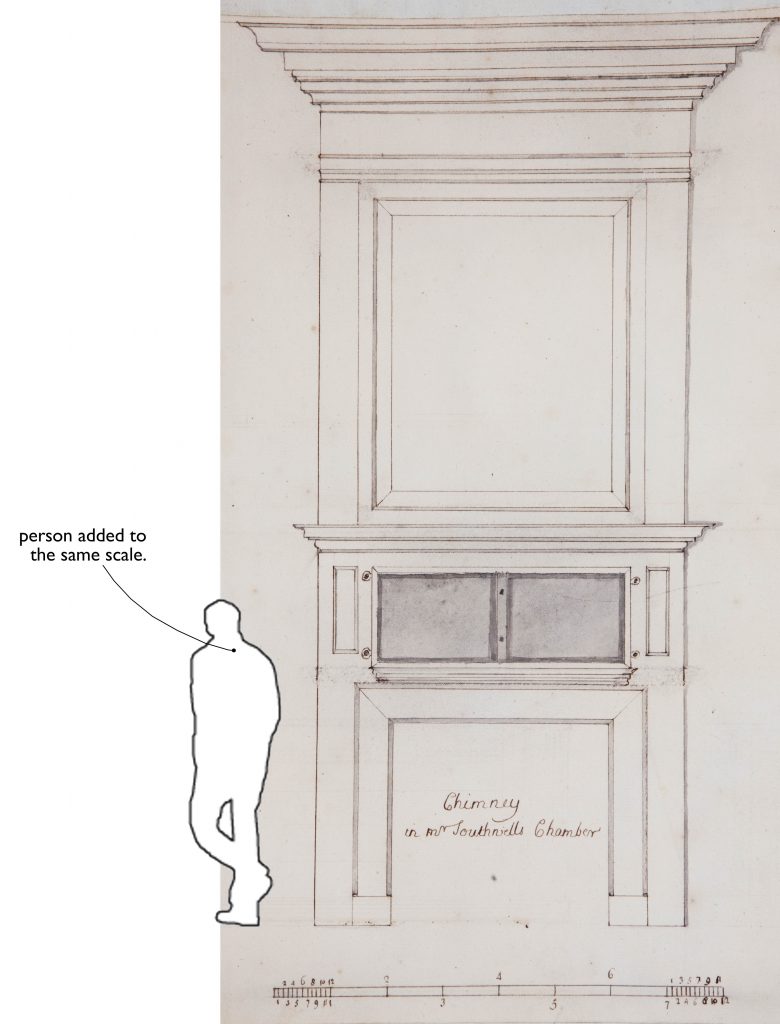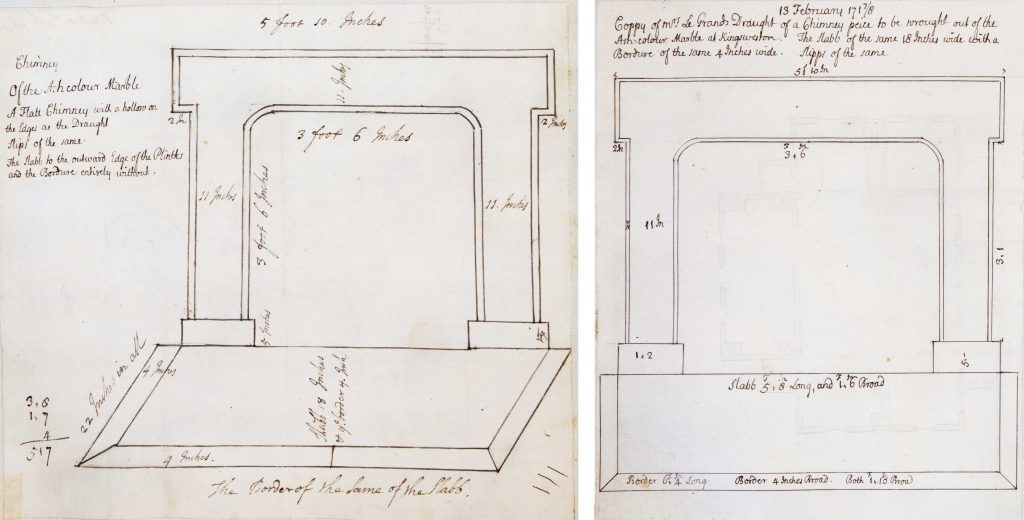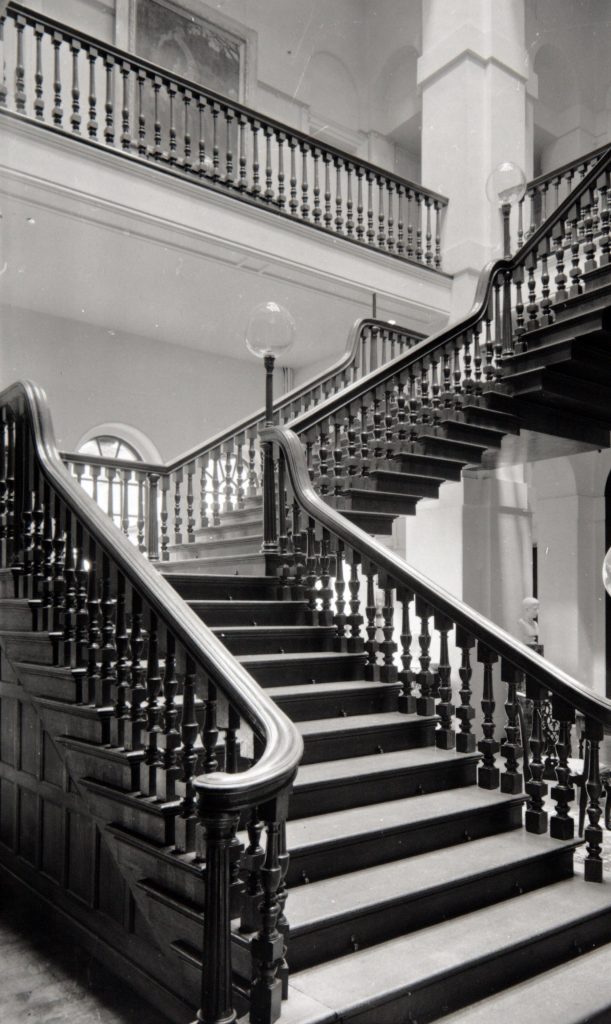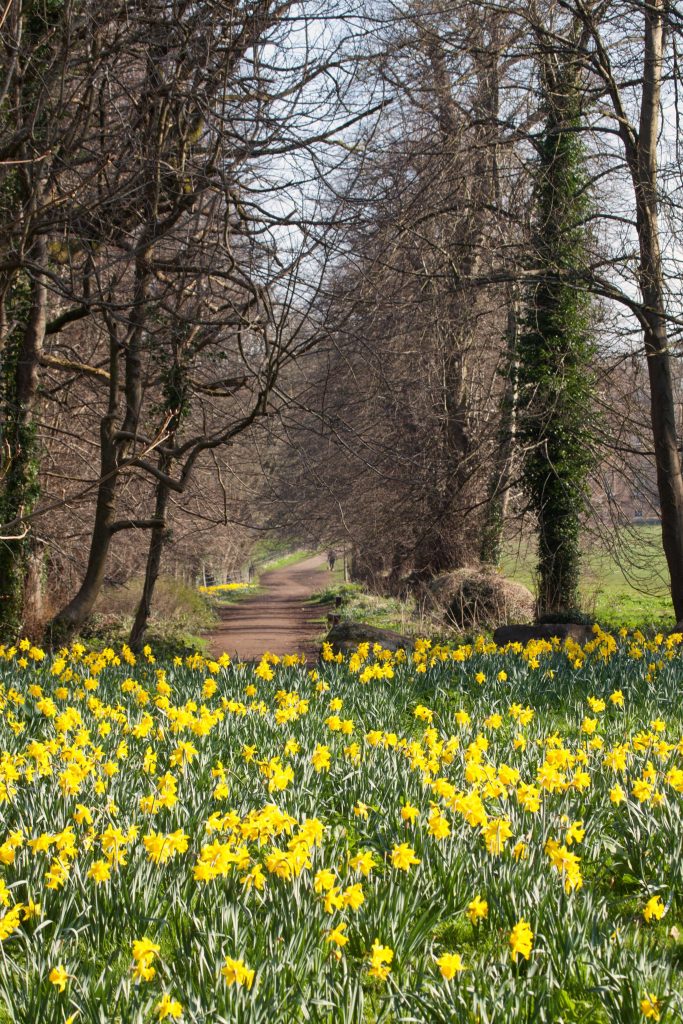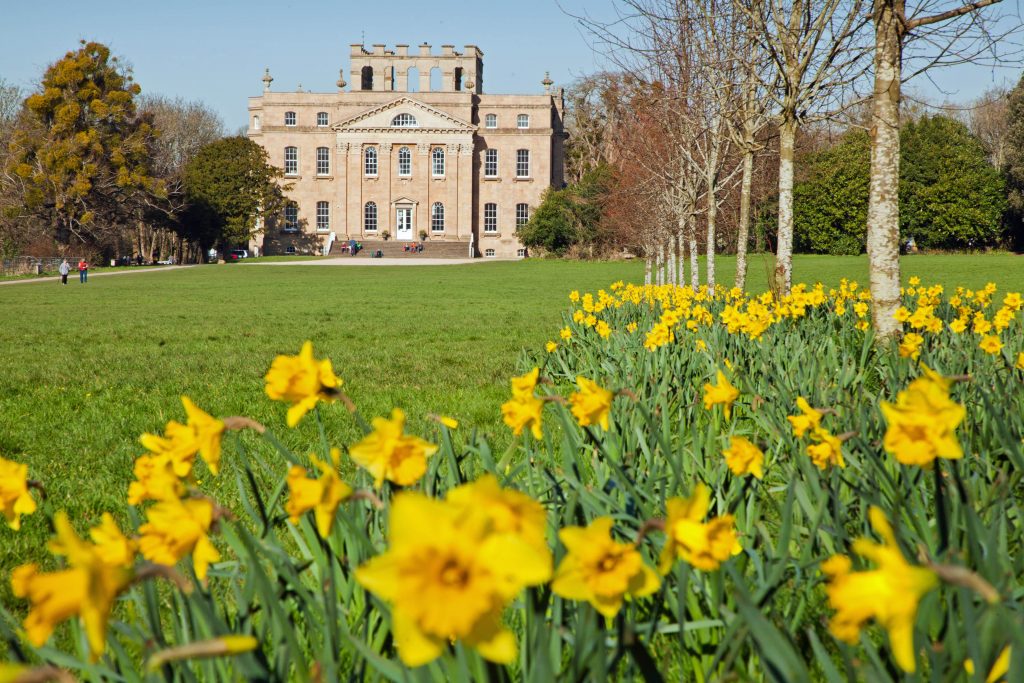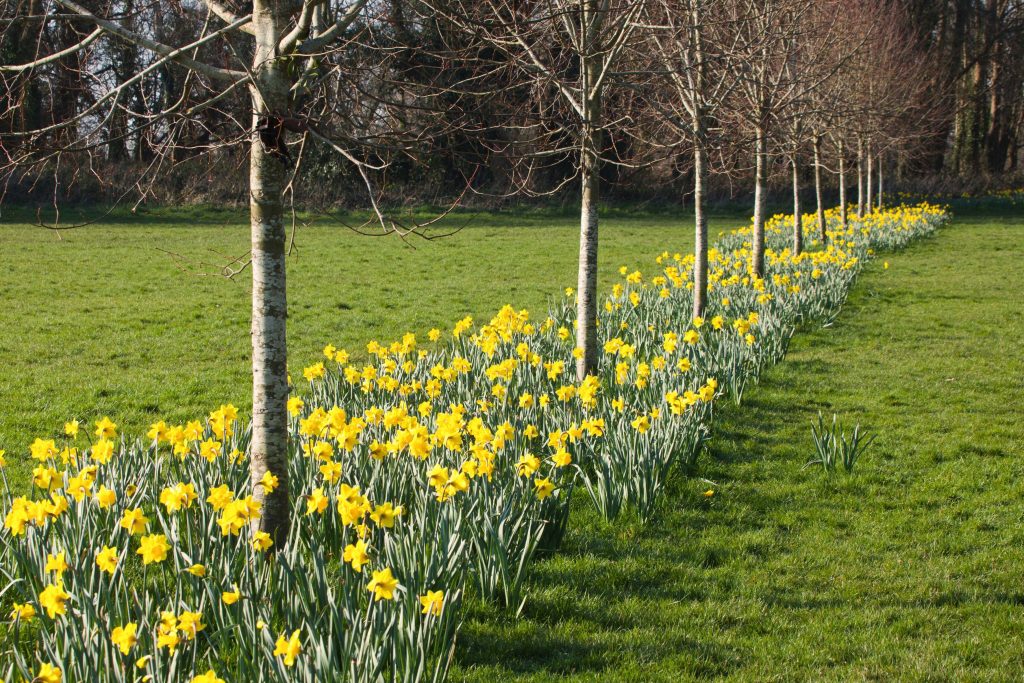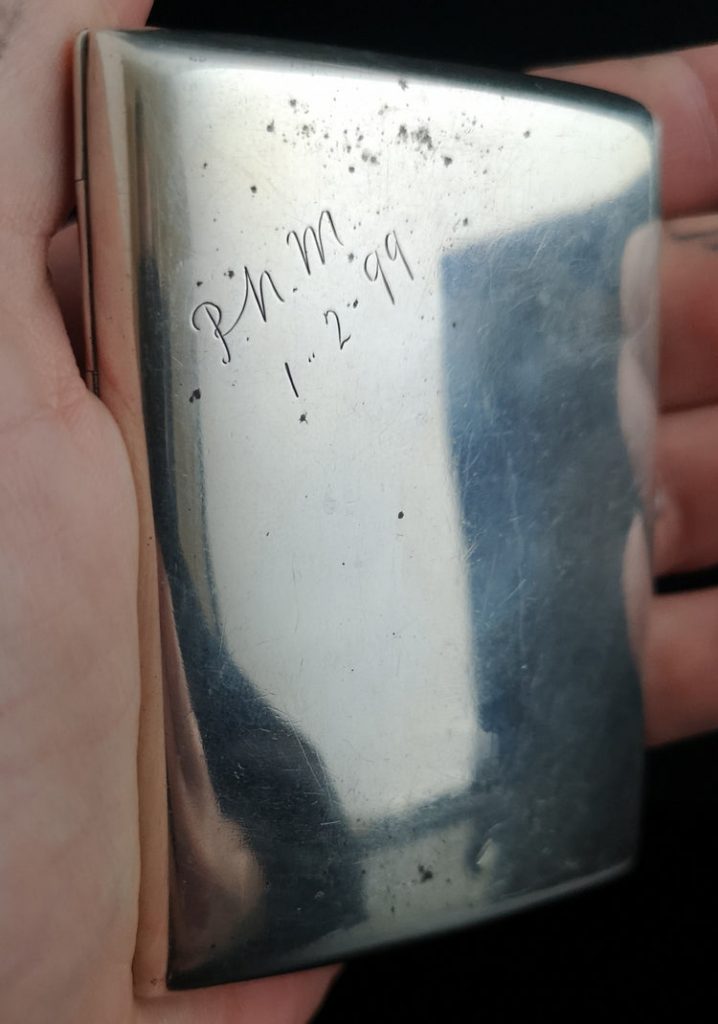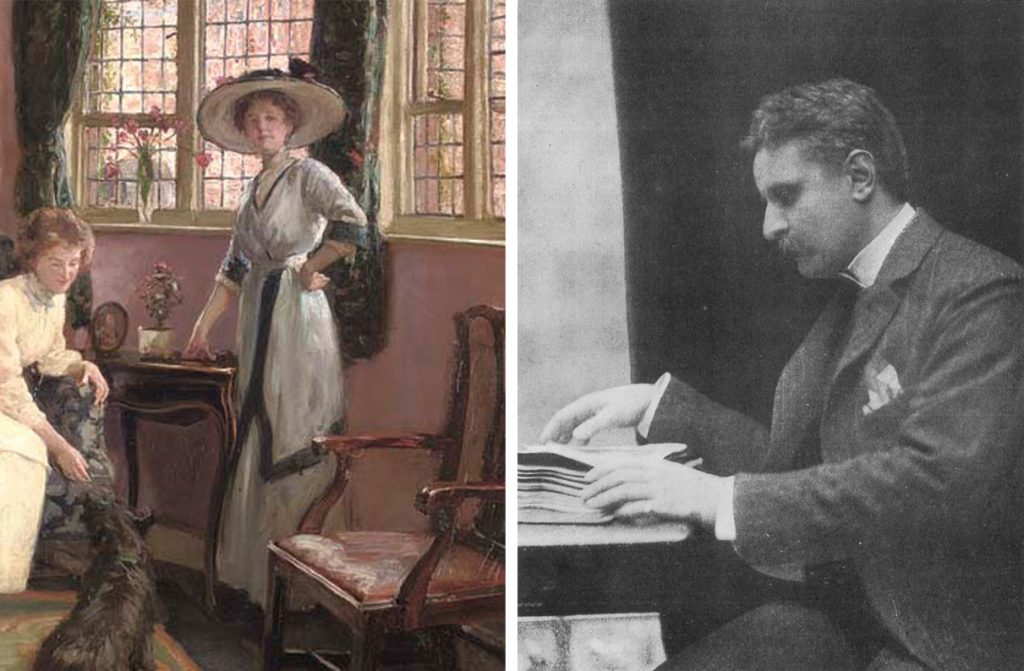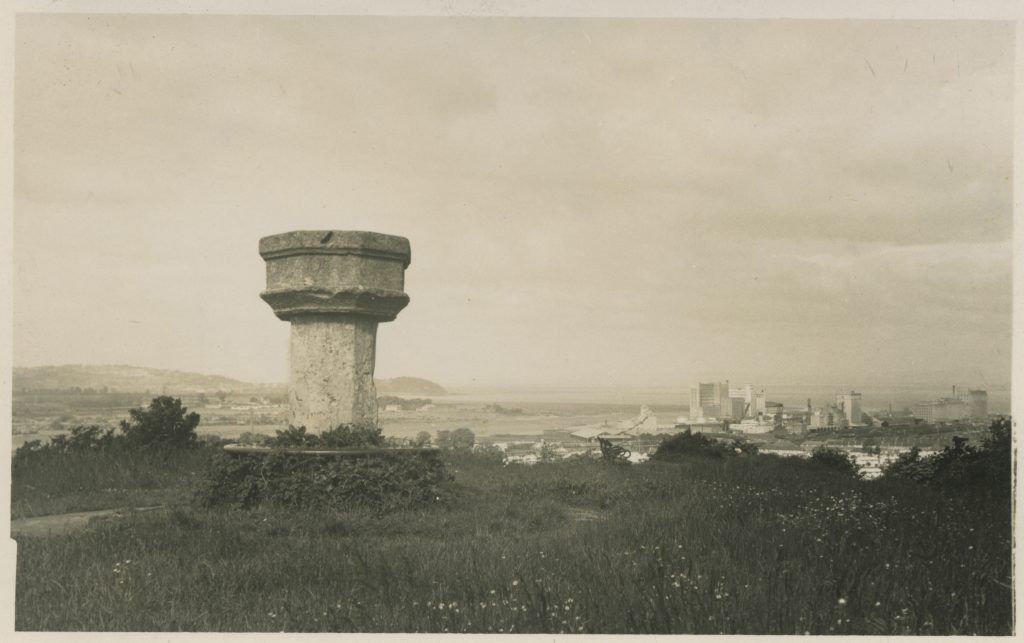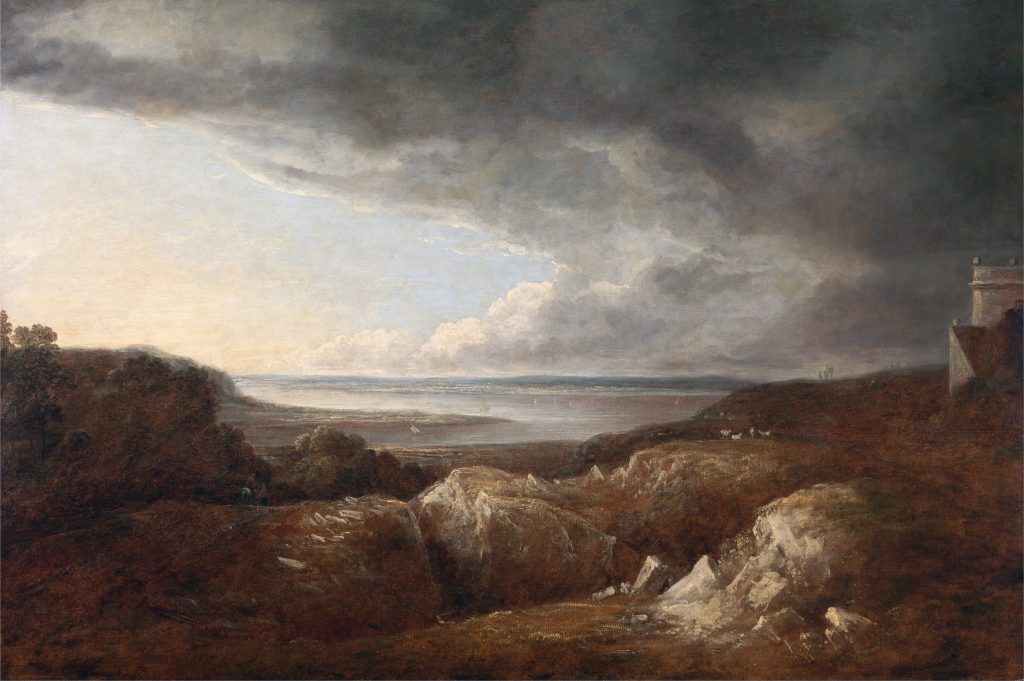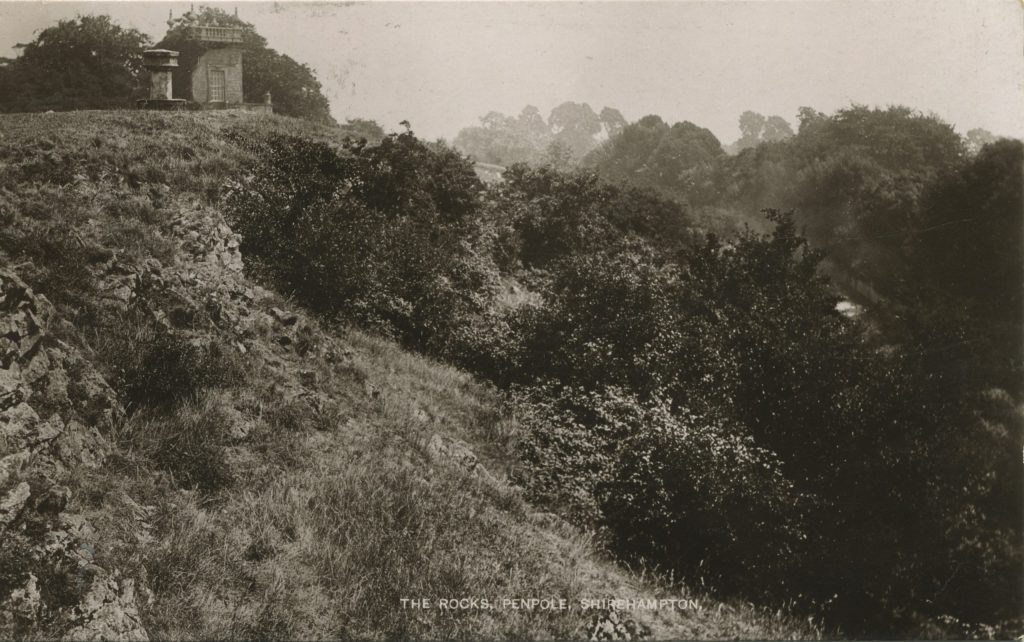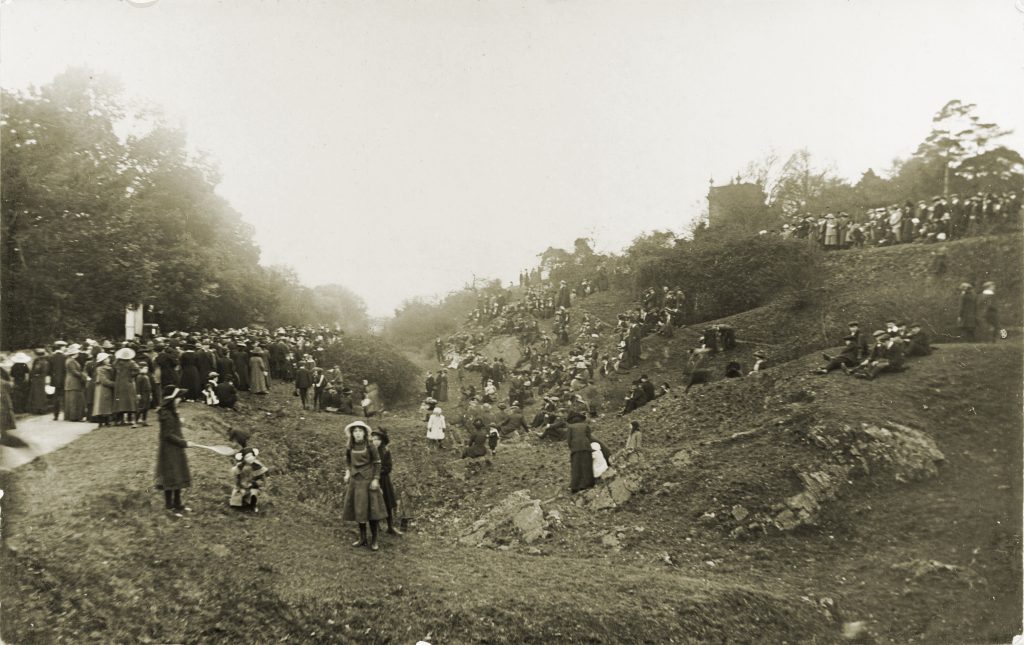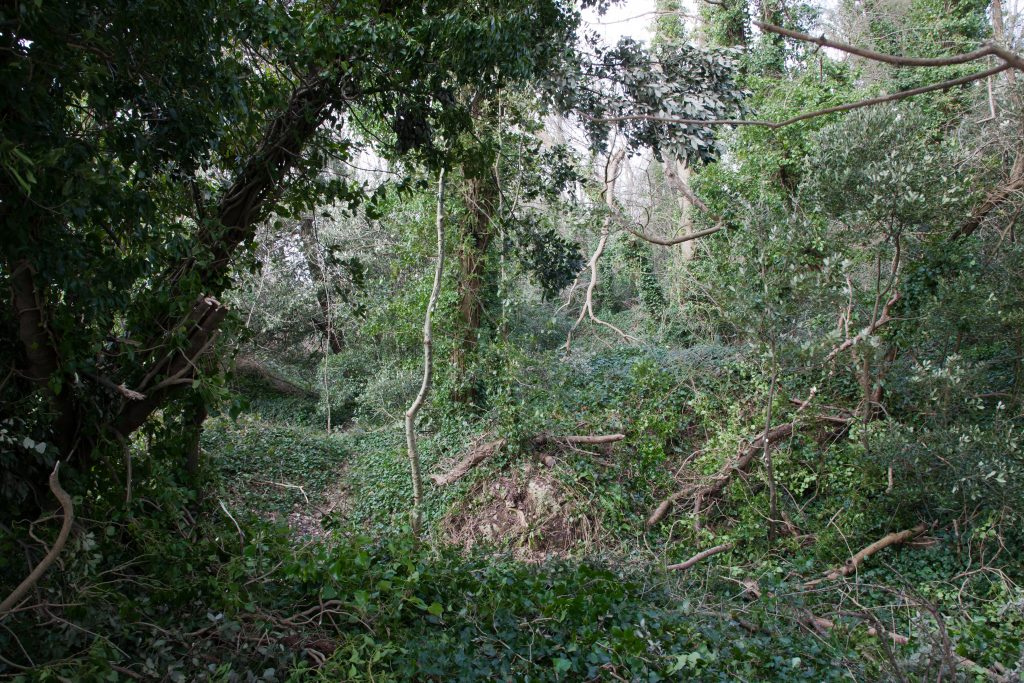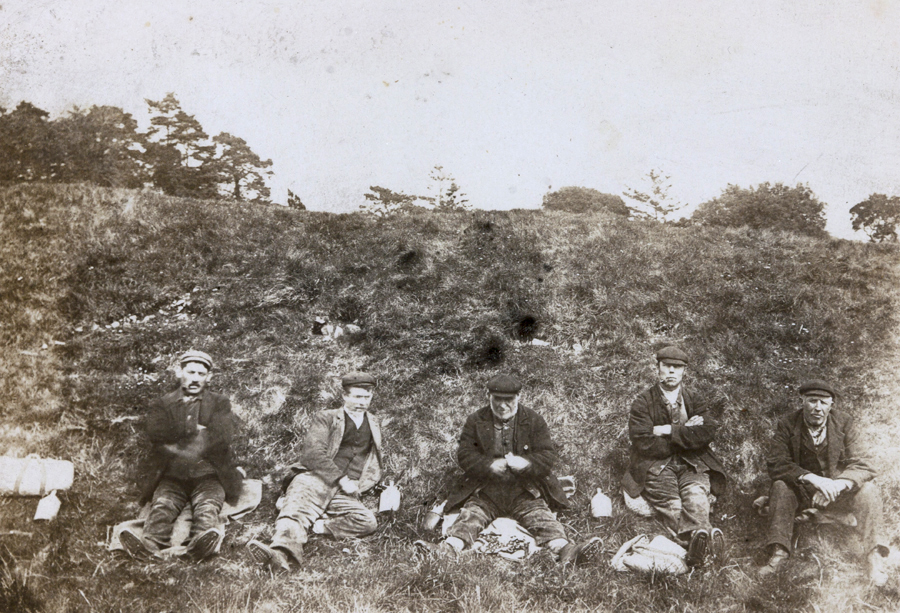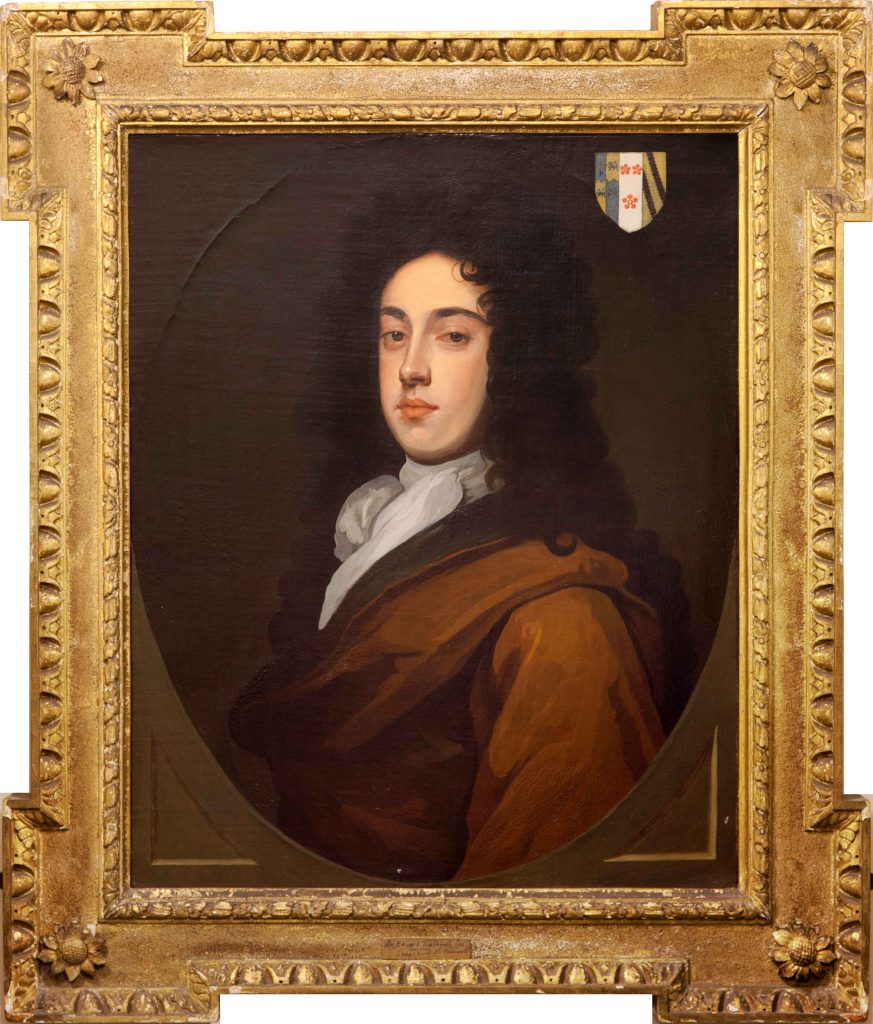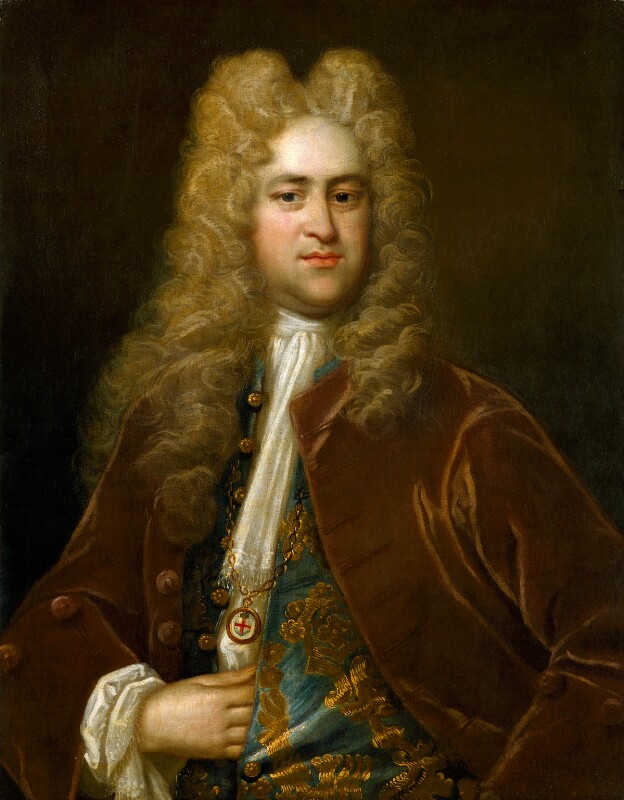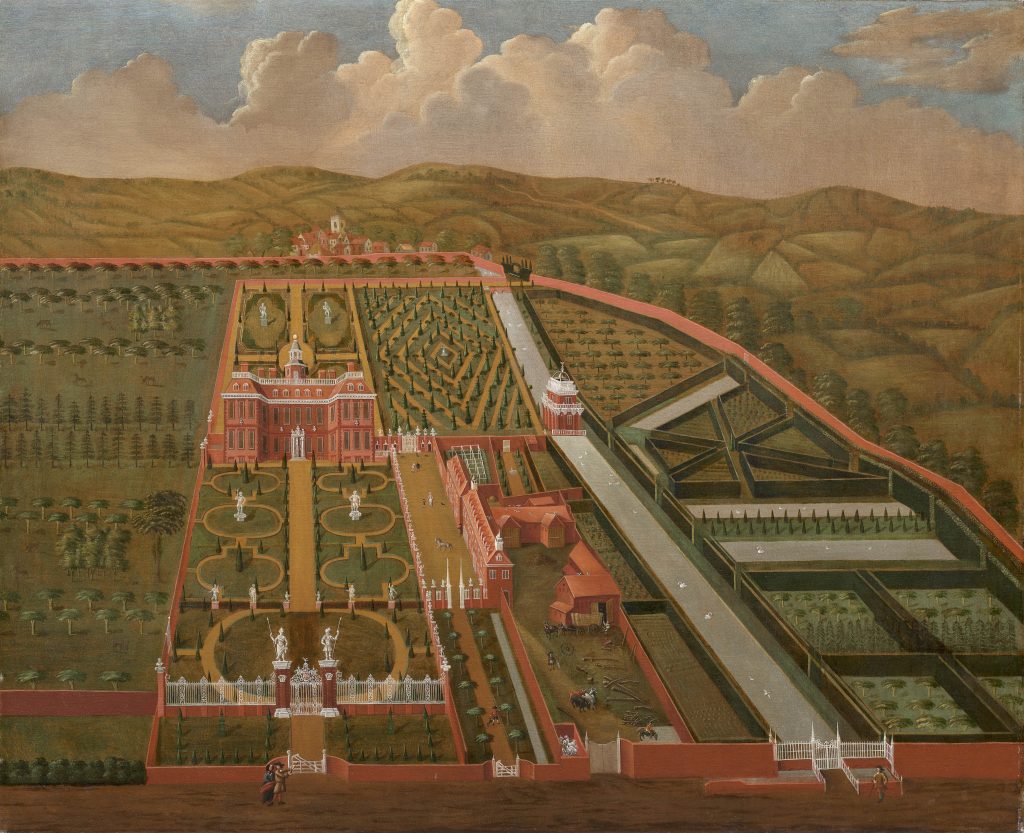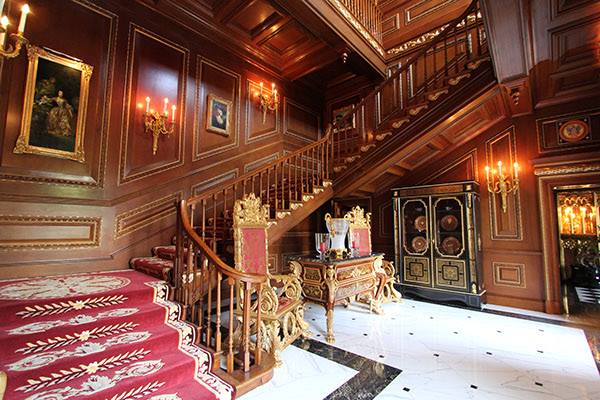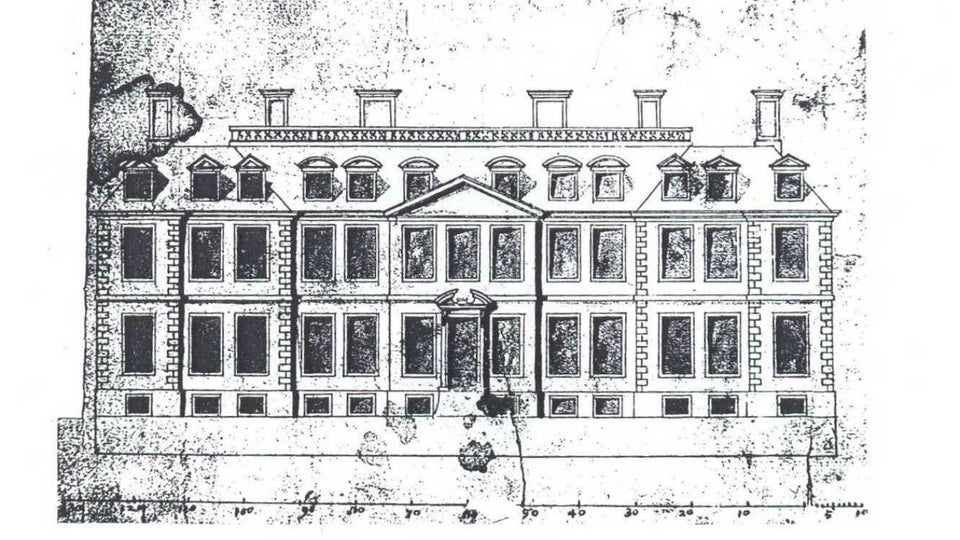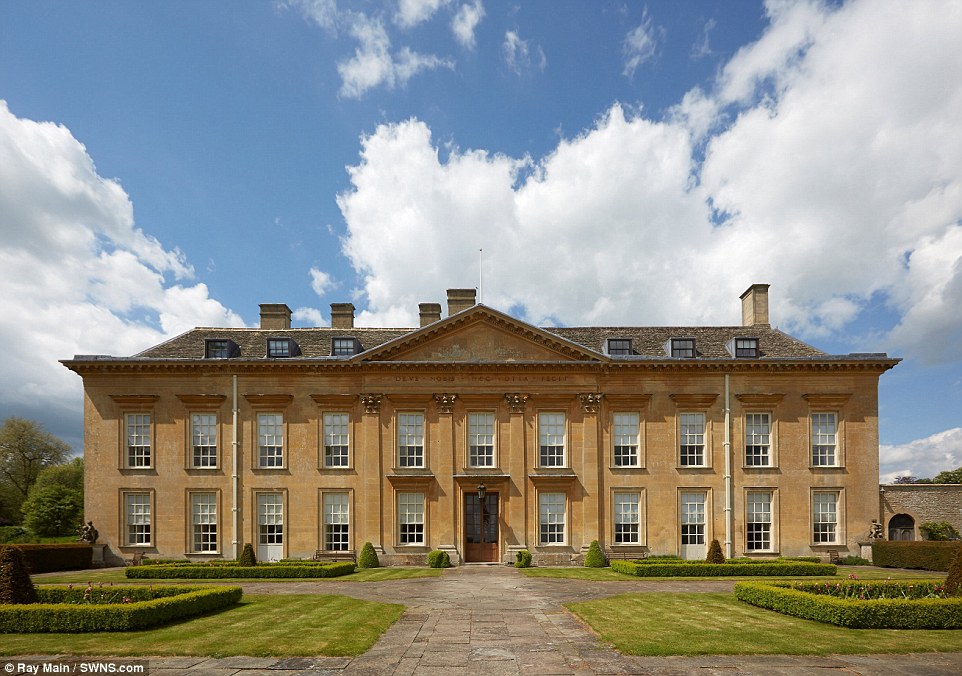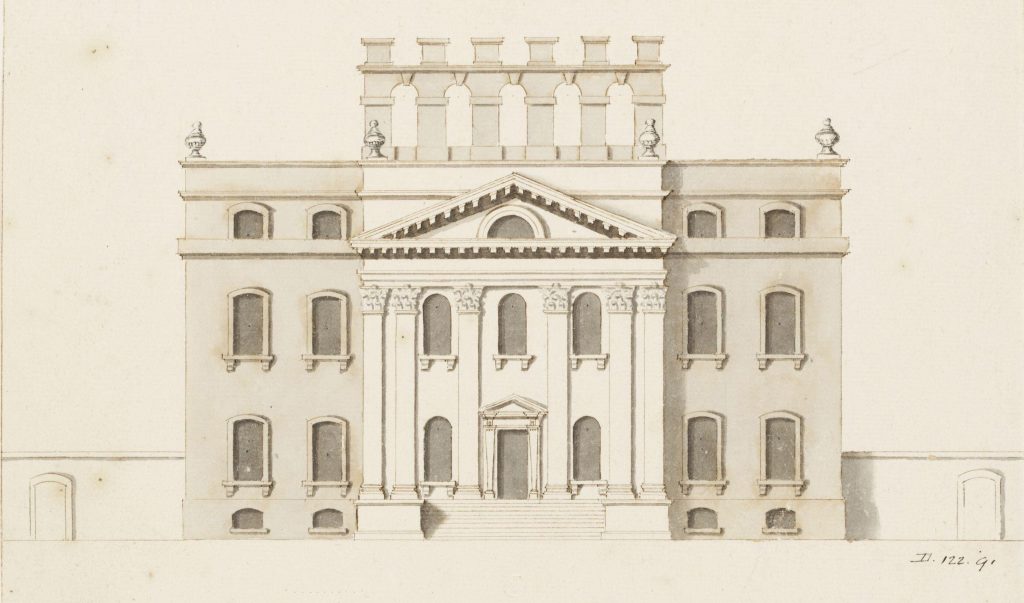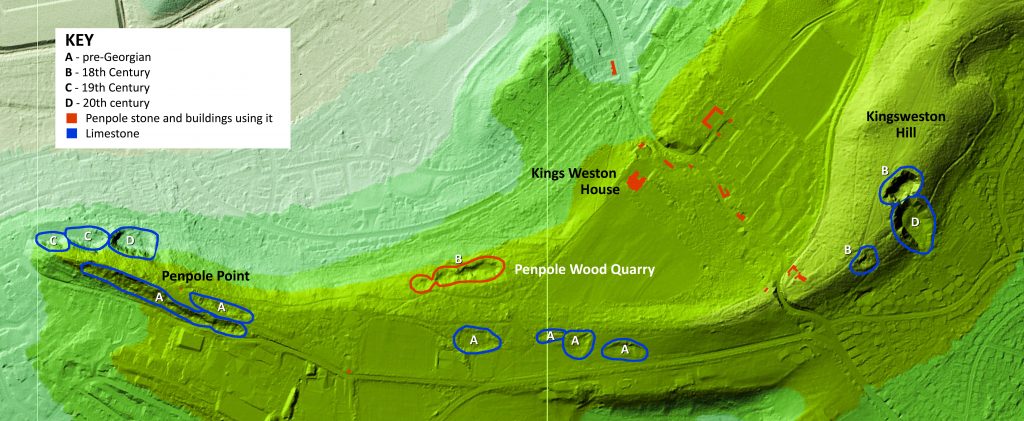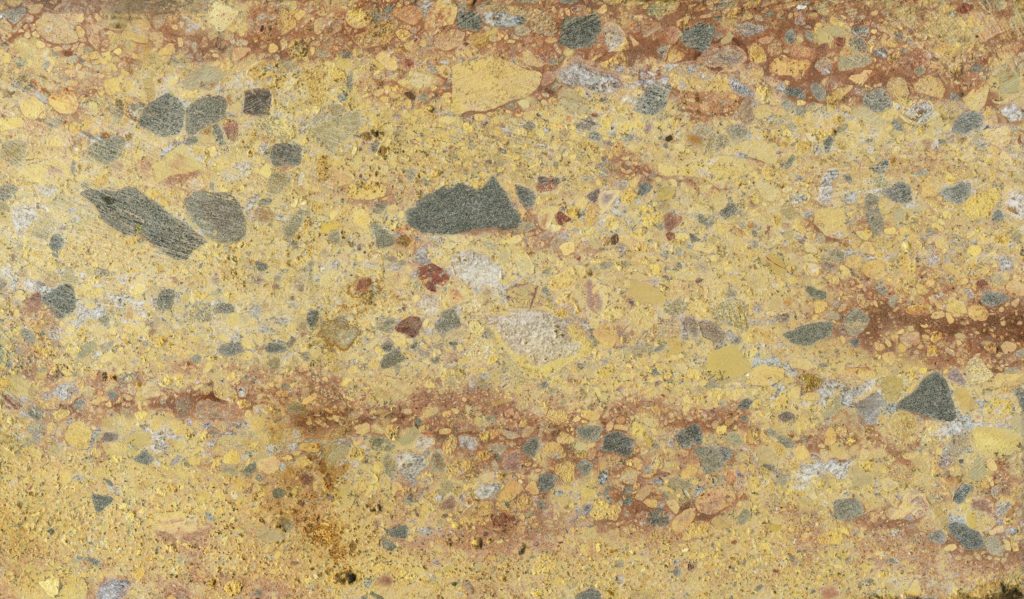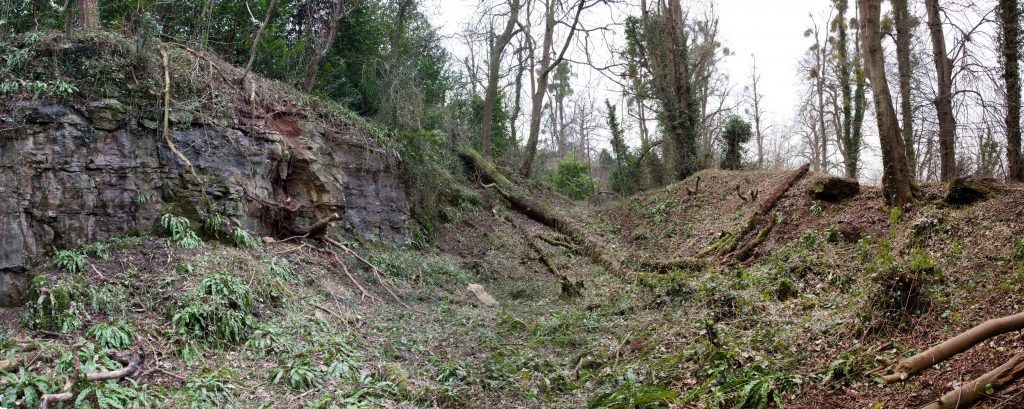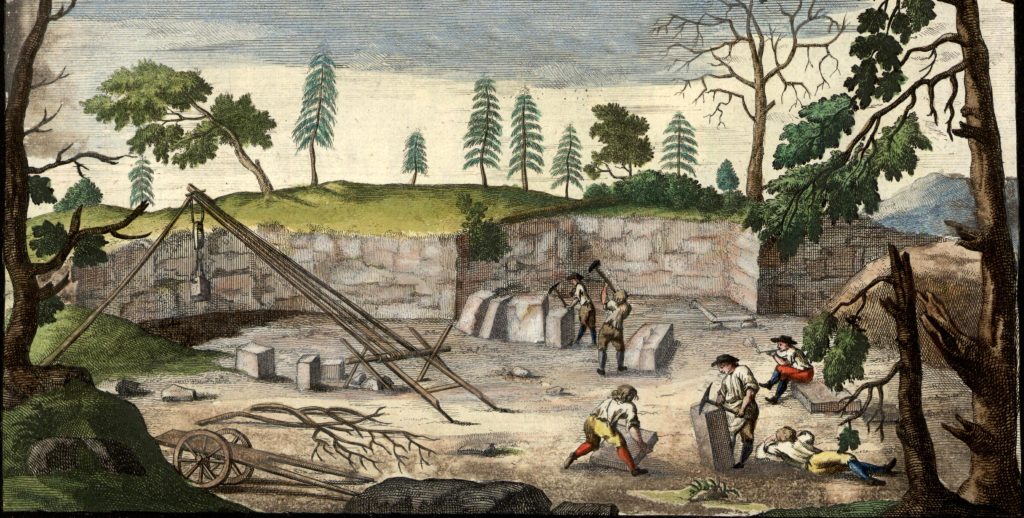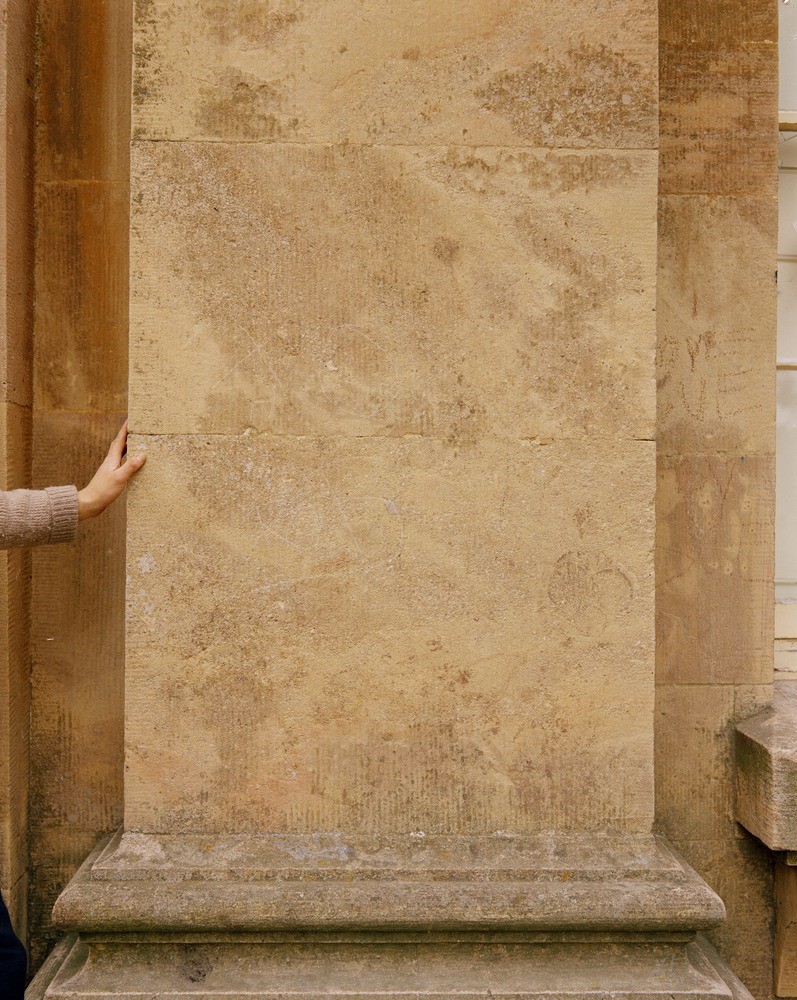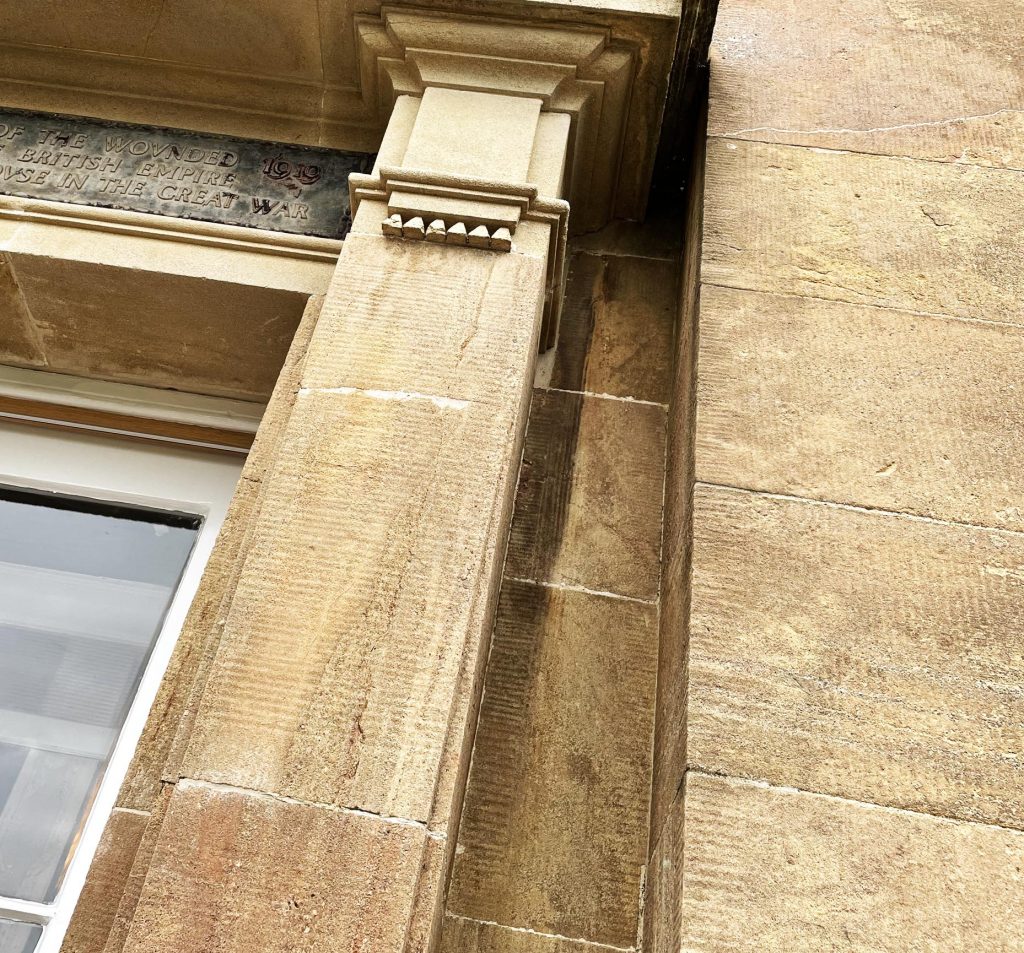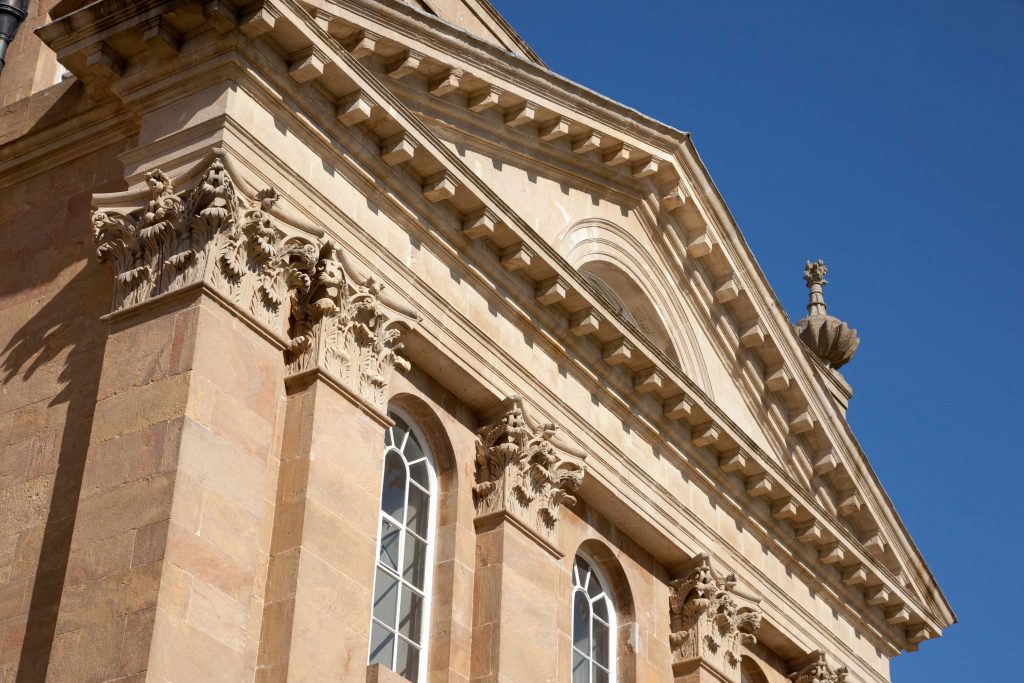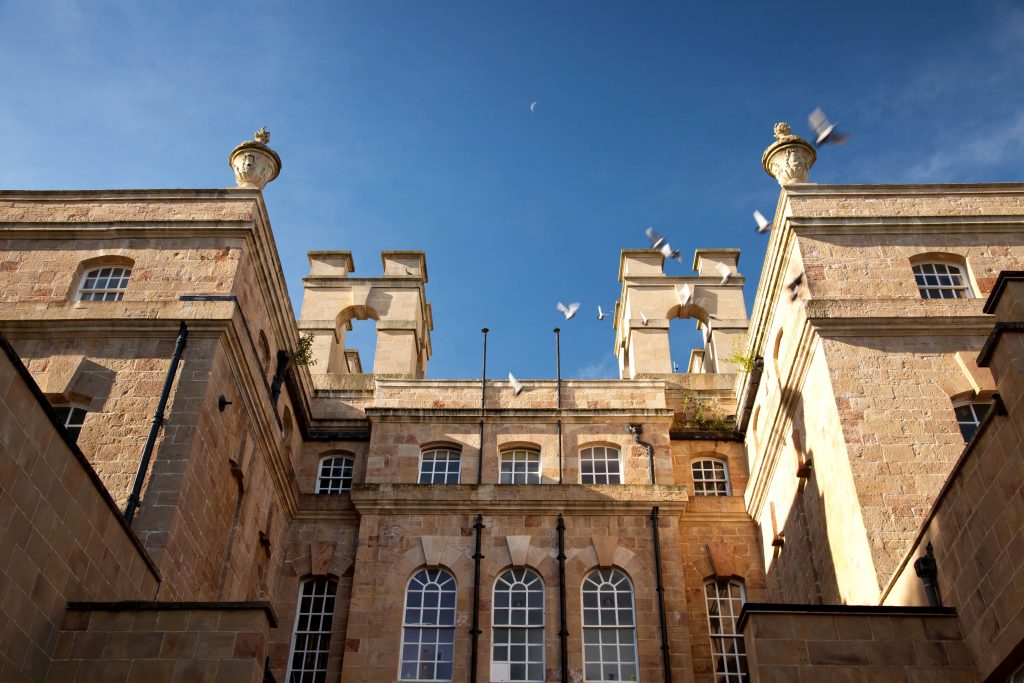We reported last month on the parch parks that had become visible in the lawns around the house in the hot weather. We’re really grateful to Matt Ford, a drone enthusiast, who remembered us asking about this a couple of years ago, and captured a couple of great images looking down on the area. These have revealed much more about what we could see on the ground, and have also helped correct some of the archaeological survey work we’d undertaken in previous years.
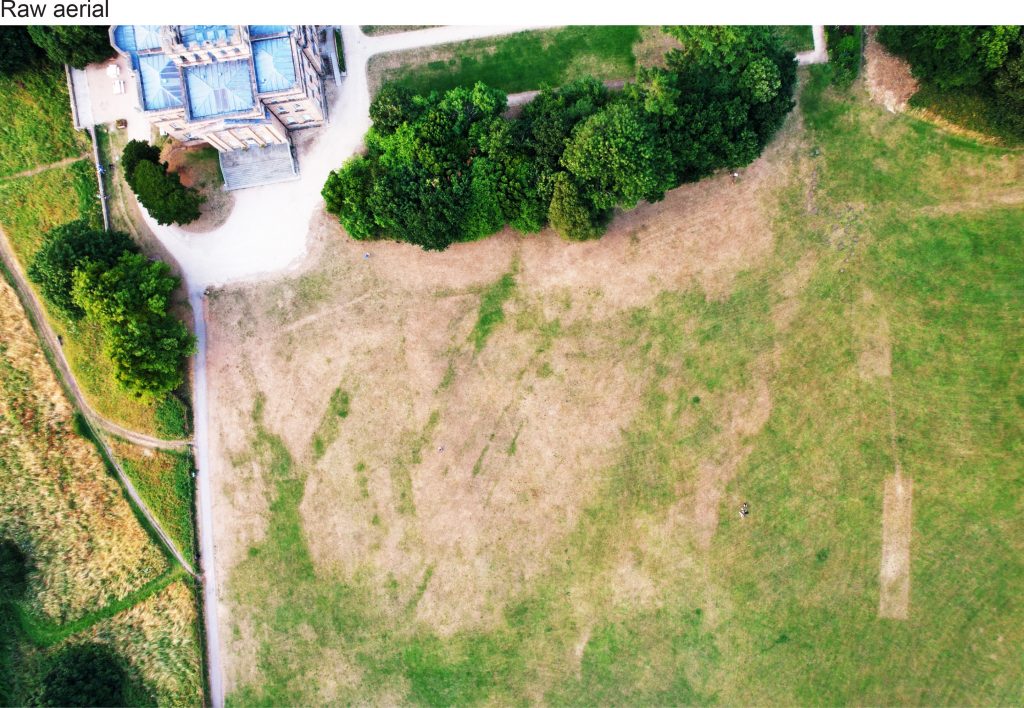
The first thing that probably stands out are the parallel green lines running diagonal to the house. These were also picked up with geophysics surveys and represent low-density, moisture-retaining features that have allowed the grass to remain green for longer. We now think the most likely explanation for these is that they are part of the underlying geology, running roughly aligned to Penpole ridge.
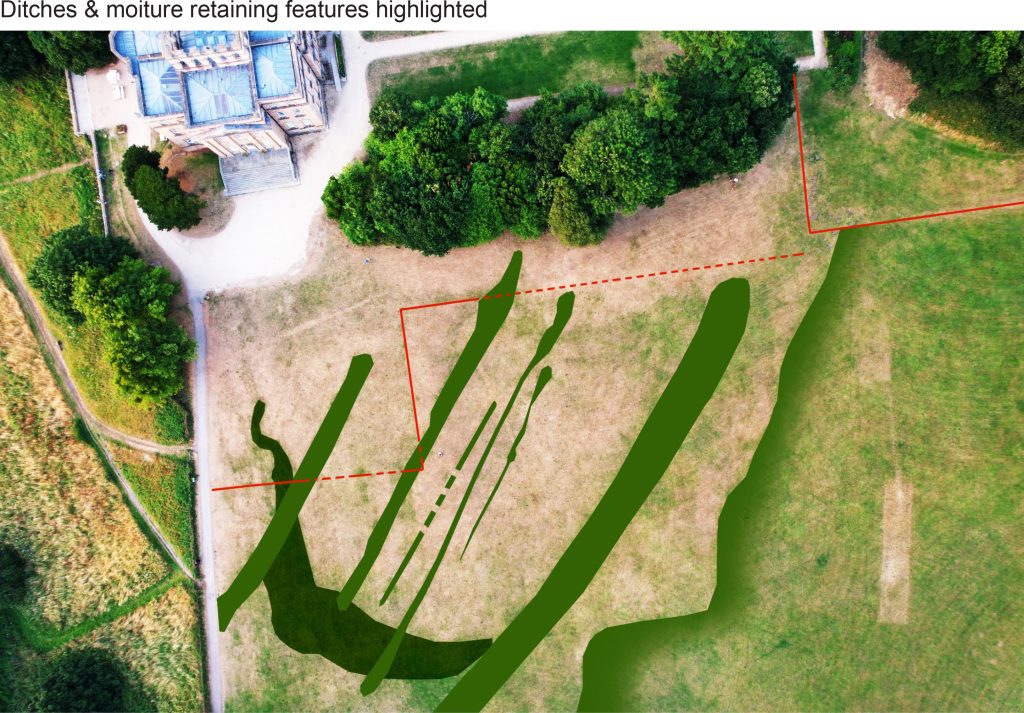
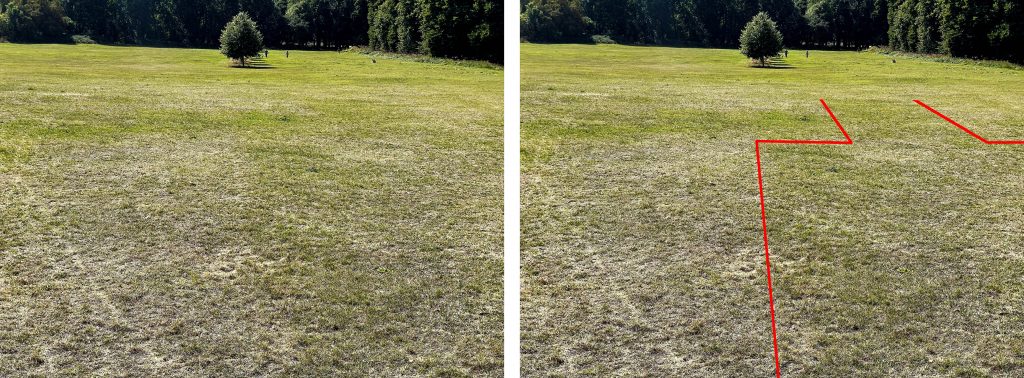
You have to look a little closer to start picking out some of the lost historic features. We knew the outline of the Great Court in front of the main front of the house remained as a shadow in the geophysics data, but the hot weather revealed it physically on the ground once more. The court was created as the grand formal setting that helped frame the grand main facade of the house when it was rebuilt to the designs of Sir John Vanbrugh from 1712. The aerial photo includes a clear demarcation of the side and front walls, with a pronounced corner being the most defining feature (feature B). Also visible are wide strips of green heading away from the house and the Great Court. These are part of the parallel avenues of lime trees that once connected to The Circle as part of a grand axial arrangement, and alignment of out 2014 trees corresponding with that line.
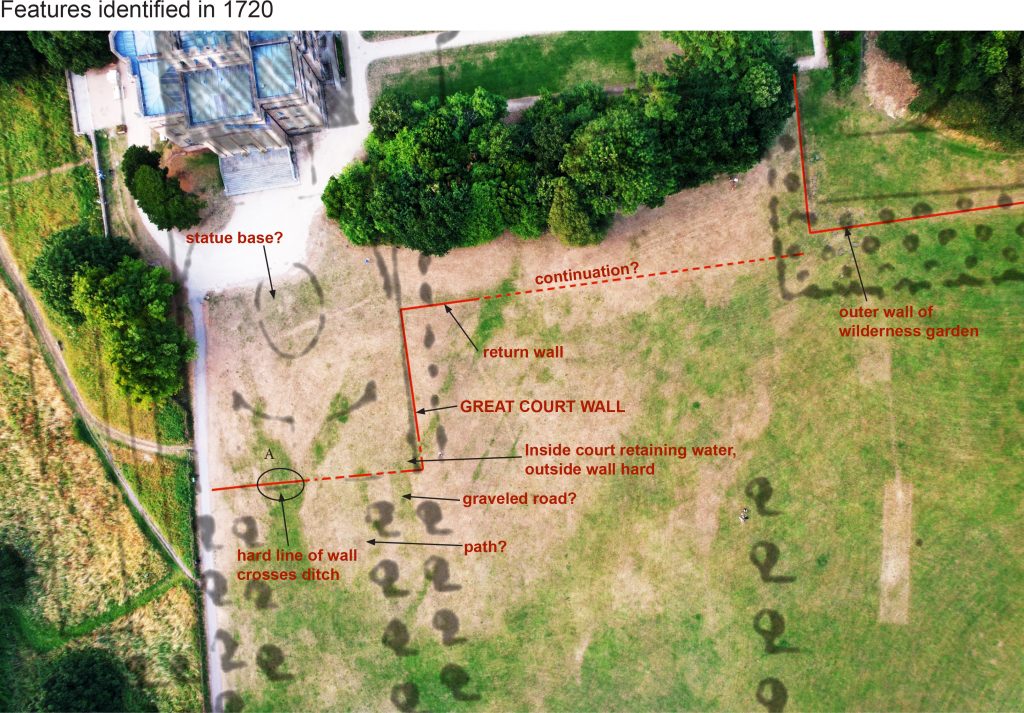
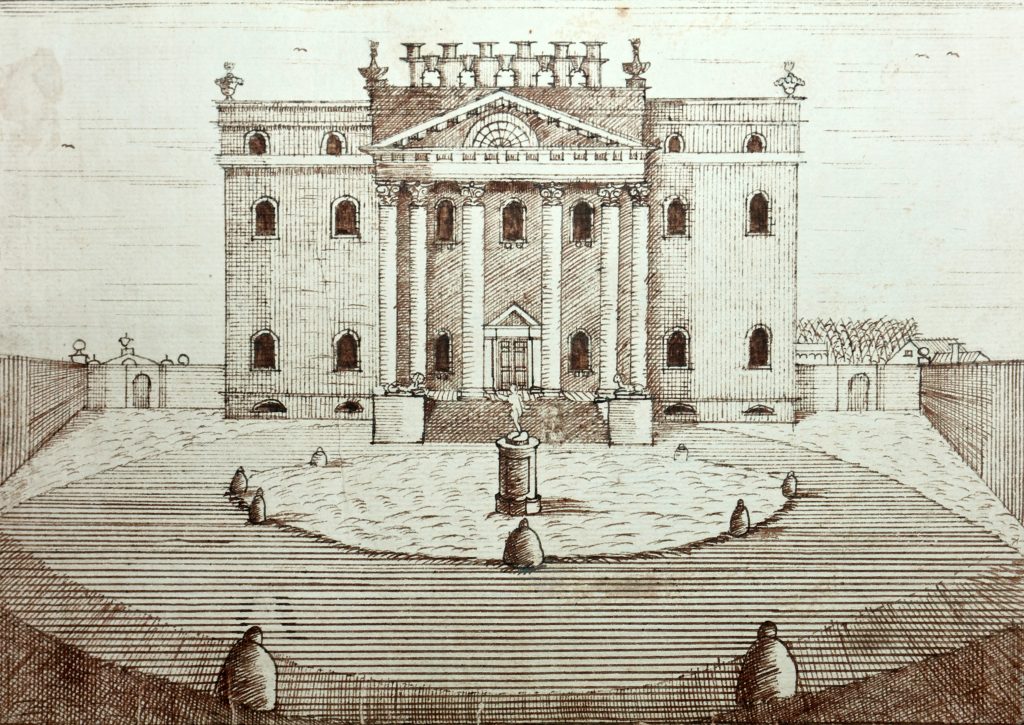
One thing that’s puzzling is why the Great Court shows as more green than the dry grass to the south. The visitor can still see the very shallow depression where the court must have been cut down directly into the rock to create a perfectly flat yard, so why would this not be harder ground with shallower soil that would dry out more quickly? It may be that, when the surrounding walls were taken down and the court deformalized in the 1760s, the ground had to be made back up again to form an unbroken smooth lawn. This would see looser fill material offering a better harbour for moisture, and explain why it read as low-density on the geophys. This also suggests the strips were also cut in, and later infilled.
The Great Court might explain another feature further to the north, a thin but defined line, that relates to the alignment of the front wall (Feature E). This was in the area covered by geophys, but there was no corresponding high-resistance feature that would otherwise indicate a wall. The jury’s out on this particular mark.
A pronounced feature (feature A) that does appear on the ground and the geophys is a hard lump or two nearly symmetrical with the front of the house. With its prominent location in the centre of the court it’s tempting to interpret this as being the foundation for the statue base for a statue of Hercules dating from the building of the house from 1712-1716; perhaps future excavation will reveal this and confirm whether the base of the statue of Hercules at Goldney House, Clifton, matches the one lost from Kings Weston.
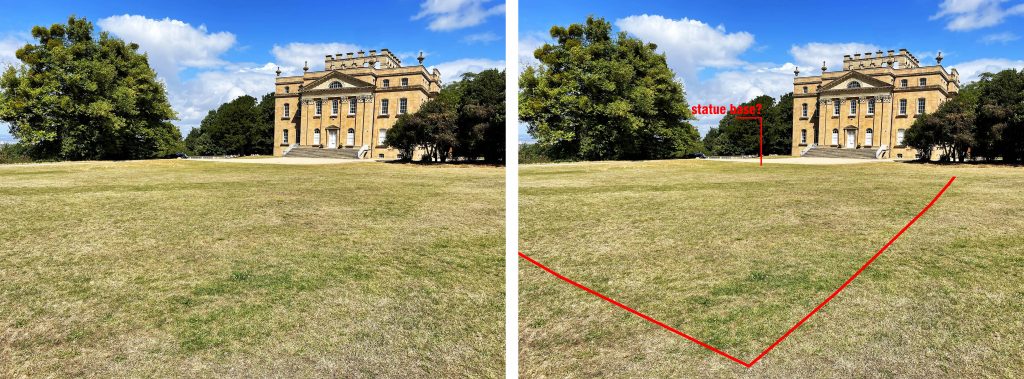
Our second geophys survey in 2017 we supposed to be geo-referenced to make sure it overlaid with our earlier 2014 results, however, the parch marks now indicate that it was a bit off. We have now been able to correct the overlap between the two by matching the physical marks on the ground. Comparing both parch parks and the survey shows that there is a return wall (feature C) stretching southwards, away from the Great Court that adds to our understanding of the garden layout. It’s not a feature shown on any early maps, but probably dates to the same period as the mansion. It bisects the Great Court midway along its south wall suggesting that it was aligned to the centre and the statue location.
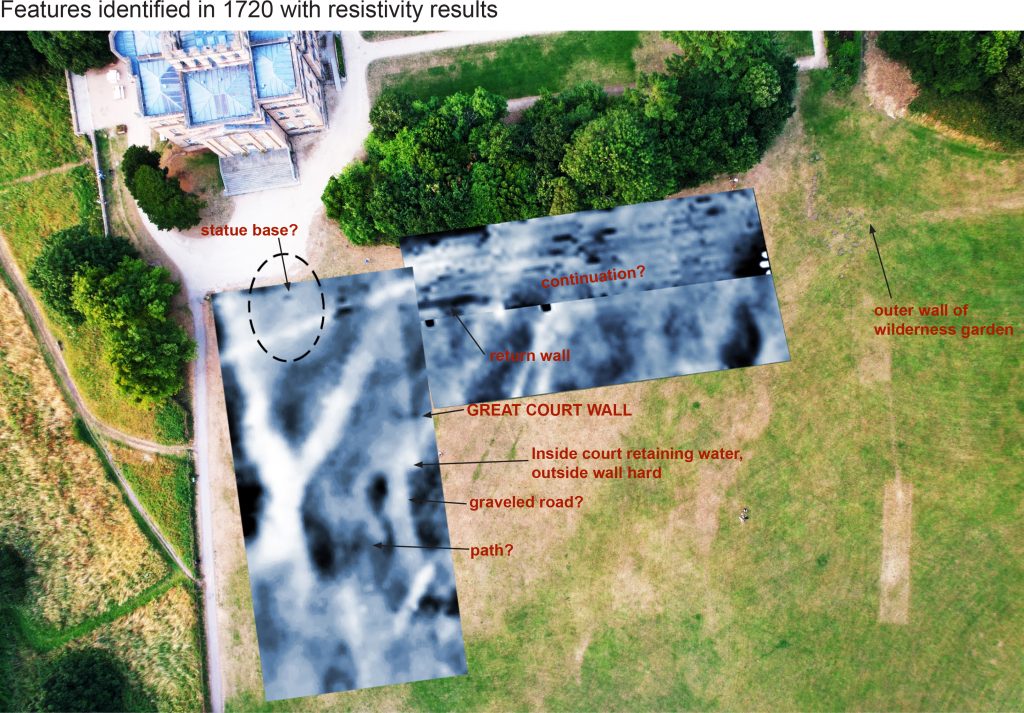
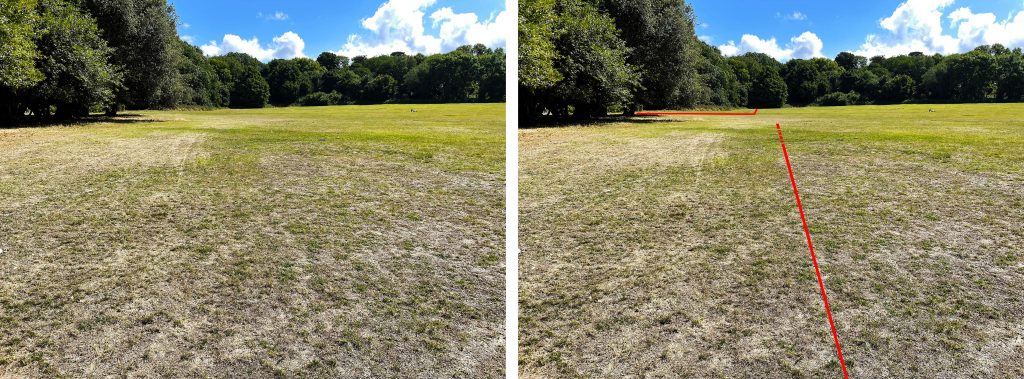
Another new discovery has been the locating of the garden wall of the second of the earlier large garden courts that spread out between the house and the Echo (feature D). We have this in early engravings and plans, but the parch marks now locate it physically. Marks show that the existing formal garden was designed to be slightly shorter, with the lost ‘wilderness’ garden beginning closer to the house than the current hedge. The marks also show that the wilderness garden was much wider than previously thought, and with this knowledge it’s now easy to see variations in the topography of the field that likely relate to it. This area may be worth looking at for archaeological excavation to explore what features might remain from this important 17th Century feature.
At this point it’s worth bringing in another survey technique: LiDAR (Light Detection and Ranging). This uses laser measuring to create a hyper-detailed topographical survey that can be adjusted to highlight lumps and bumps on the surface of the land. We know from this that there are a series of regular parallel ridges across the whole of the lawn, and that these don’t relate to the natural bedrock below. We don’t know what they are, or why they’re here, but we can tell is that they pre-date the 17th and 18th Century garden features as they’re truncated by them.
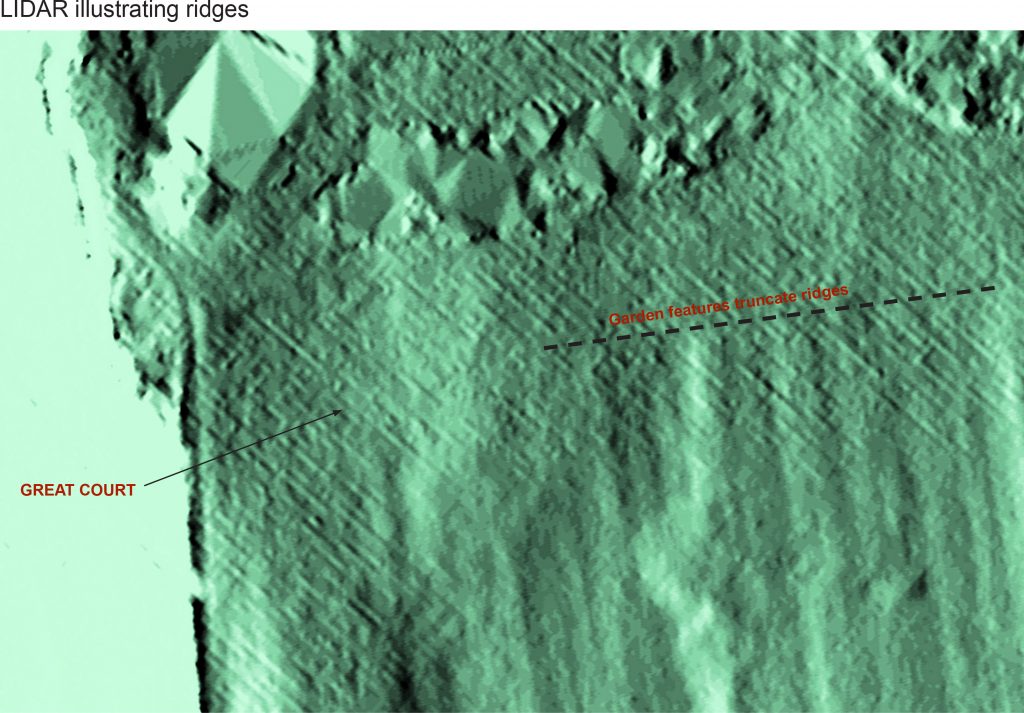
One final detail brought out by the dry weather has at least photographic evidence supporting it; Moving attention to the garden front of the house there are marks in the recently laid lawn that correspond to alternating circular and rectangular rose and flower beds of the Victorian era (feature F). Perhaps a focus on this area in future years might reveal more of earlier garden layouts?
